Describing Words for Monsters: Examples and Tips

Monsters have always fascinated us with their terrifying presence and mysterious nature. From ancient myths to modern-day movies, these creatures have captured our imaginations and sent shivers down our spines. But how do we effectively describe these monstrous beings? In this article, I’ll be sharing a range of adjectives that will help you vividly depict these creatures in your writing. Whether you’re a writer looking to create a spine-chilling monster or a storyteller aiming to bring your audience to the edge of their seats, these adjectives will add depth and intensity to your descriptions. So, let’s dive into the world of adjectives for monsters and discover how to bring these fearsome beings to life with our words.
When it comes to describing monsters, the right choice of adjectives can make all the difference. From their physical appearance to their behavior and characteristics, these words will help you paint a vivid picture in the minds of your readers. Imagine a towering, hulking creature with glowing red eyes and razor-sharp teeth. Or perhaps a slimy, tentacled beast lurking in the shadows, ready to strike. By choosing the right adjectives, you can create a sense of fear, awe, and fascination that will keep your readers hooked. In this article, I’ll be providing you with a comprehensive list of adjectives for monsters, along with examples of how they can be used effectively in your writing. So, let’s get started and unleash the power of words to bring these monstrous beings to life on the page.
Table of Contents

How to Describe monsters? – Different Scenarios
When it comes to describing monsters, it’s important to choose the right adjectives to create a vivid and engaging description. Whether you’re writing a story, creating a game, or just trying to spark imagination, here are some different scenarios and examples of how to describe monsters effectively:
When describing a monster’s appearance, it’s important to provide details that paint a clear picture in the reader’s mind. Here are a few adjectives to help you describe a monster’s appearance:
A monster’s abilities can add an element of awe and fascination to your description. Here are a few adjectives to describe a monster’s abilities:
Describing the environment in which a monster resides can help set the mood and enhance the reader’s experience. Here are some adjectives to describe a monster’s environment:
Describing Words for monsters in English
When it comes to describing monsters, choosing the right adjectives can bring your writing to life. These descriptive words help paint a vivid picture in the reader’s mind, creating a sense of excitement and intrigue. Let’s explore some powerful adjectives that can be used to describe monsters in English:
Examples of Describing Words for Monsters:
Adjectives for monsters
As a seasoned writer, I understand the importance of using accurate and descriptive language to bring monsters to life in our stories. In this section, I’ll provide you with a selection of adjectives that will help you create vivid descriptions of these mythical creatures. We’ll explore both positive and negative adjectives and provide example sentences to illustrate their usage.
Positive Adjectives for Monsters
When describing monsters in a positive light, we can use words that evoke a sense of admiration, awe, or fascination. Here are 12 examples of positive adjectives you can use:
| Adjective | Definition |
|---|---|
| Majestic | Impressive in appearance or action |
| Powerful | Having great strength or influence |
| Graceful | Elegant and smooth in movement |
| Enchanting | Having a magical or charming quality |
| Courageous | Brave and fearless |
| Noble | Exhibiting dignity and honor |
| Mystical | Having a spiritual or otherworldly quality |
| Legendary | Extremely famous and well-known |
| Ferocious | Fierce and aggressive |
| Resilient | Able to recover quickly from difficulties |
| Indomitable | Impossible to defeat or overcome |
| Wise | Showing good judgement and understanding |
Negative Adjectives for Monsters
On the other hand, negative adjectives can be used to evoke fear, disgust, or horror when describing monsters. Here are 5 examples of negative adjectives that can be used:
| Adjective | Definition |
|---|---|
| Monstrous | Extremely ugly or frightening |
| Sinister | Giving a feeling of evil or harm |
| Ghastly | Shockingly frightful or horrifying |
| Hideous | Extremely ugly or unpleasant to look at |
| Terrifying | Filling with extreme fear |
Synonyms and Antonyms with Example Sentences
Synonyms for monsters.
| Synonym | Example Sentence |
|---|---|
| Beast | The beast emerged from the shadows, its eyes gleaming with hunger. |
| Creature | The ancient creature slumbered in the depths of the cave, waiting for its next victim. |
| Fiend | The fiendish monster cackled as it unleashed its terror upon the unsuspecting town. |
| Monstrosity | The towering monstrosity terrorized the city, leaving destruction in its wake. |
| Abomination | The grotesque abomination lurked in the darkness, its presence sending shivers down my spine. |
Antonyms for monsters
While synonyms can help you provide a range of descriptions for monsters, antonyms can provide a contrast by highlighting the absence of monstrous qualities. Here are some antonyms for the word “monster” along with example sentences:
| Antonym | Example Sentence |
|---|---|
| Angel | Unlike the menacing hordes of monsters, the angelic figure radiated warmth and serenity. |
| Saint | The saintly figure stood amidst the chaos, providing solace and hope to those in need. |
| Hero | In the face of danger, the hero valiantly fought against the monstrous forces threatening the world. |
| Human | The creature before me, although strange in appearance, had a trace of humanity in its eyes. |
| Protector | The mighty protector defended the innocent from the clutches of the monstrous creatures. |
By incorporating synonyms like beasts, creatures, fiends, monstrosities, and abominations, we can tap into different aspects of a monster’s nature, whether it be their physical appearance, behavior, or inherent evil. On the other hand, antonyms such as angels, saints, heroes, humans, and protectors provide a contrasting view, highlighting the absence of monstrous qualities and offering a glimpse of light in an otherwise dark world.
Remember, a well-crafted description is crucial in captivating readers and immersing them in the world of your story. By utilizing synonyms and antonyms, we can create a more nuanced and vivid portrayal of monsters, allowing our readers to truly experience the terror or awe that these creatures evoke.
Related Posts
Describing blood: adjectives with examples, adjectives for age: describing words & examples, adjectives for fight: examples and describing words.
How to Write a TERRIFYING Monster
Writing a monster that’s actually scary to read is not easy.
So let’s go over some examples of terrifying monsters from books, talk about why they work, then practice writing some of our own together!
During the last stream, a subscriber requested that we go over how to write a terrifying monster.
You can watch the video here to or scroll down for notes/highlights.
How to Write a Terrifying Monster
- Writing a monster that is actually scary to read is not easy
- Most of the terror that a monster brings is in the buildup to it: the anticipation and suspense is quite often scarier than the creature itself
- So if you want to make sure that your monster lives up to its hype, be sure to follow these four points:
#1. Make The Monster Interact Example: “Pickman’s Model” by H.P. Lovecraft
(In this story, a man makes terrifyingly realistic paintings of monsters, which the twist ending shows are not from his imagination, but photographs.)
It was a colossal and nameless blasphemy with glaring red eyes, and it held in bony claws a thing that had been a man, gnawing at the head as a child nibbles at a stick of candy. Its position was a kind of crouch, and as one looked one felt that at any moment it might drop its present prey and seek a juicier morsel. But damn it all, it wasn’t even the fiendish subject that made it such an immortal fountain-head of all panic—not that, nor the dog face with its pointed ears, bloodshot eyes, flat nose, and drooling lips. It wasn’t the scaly claws nor the mould-caked body nor the half-hooved feet—none of these, though any one of them might well have driven an excitable man to madness. It was the technique, Eliot—the cursed, the impious, the unnatural technique! As I am a living being, I never elsewhere saw the actual breath of life so fused into a canvas. The monster was there—it glared and gnawed and gnawed and glared—and I knew that only a suspension of Nature’s laws could ever let a man paint a thing like that without a model—without some glimpse of the nether world which no mortal unsold to the Fiend has ever had.
- The description of the creature itself here isn’t too scary, but what it’s DOING is terrifying: eating the person and driving the narrator to madness
- Having the monster interact with people in blood-curdling ways is a great way to show why it’s horrifying
- It can interact with the main character, or others, depending on the type of story you want to tell
#2. Make the Monster Unpredictable/Uncontrollable Example: In the Tall Grass by Stephen King/Joe Hill
(In this scene, main character Cal has wandered into a field of very tall grass with his sister, and despite the two of them shouting for each other and not moving, they seem like they’re getting further apart. Cal decides to stand still for thirty seconds, jump as high as he can, and see what happens.)
Thirty. He had been standing in this one spot for thirty seconds. He thought he should wait a full minute, but couldn’t, and so he jumped for another look back at the church. A part of him — a part he had been trying with all his will to ignore — already knew what he was going to see. This part had been providing an almost jovial running commentary: Everything will have moved, Cal, good buddy. The grass flows and you flow too. Think of it as becoming one with nature, bro. When his tired legs lofted him into the air again, he saw the church steeple was now off to his left. Not a lot — just a little. But he had drifted far enough to his right that he was no longer seeing the front of that diamond-shaped sign, but the silver aluminum back of it. Also, he wasn’t sure, but he thought it was all just a little farther away than it had been before.
- Fields of grass aren’t scary by themselves, but a field of grass that is unpredictable and uncontrollable is terrifying
- Defying logic, going against human intuition, these are all scary things for a monster to do
- The less control your character has over the situation/monster, the scarier it will be
#3. Make Its Appearance Based on Primal Fears Example: The Name of the Wind by Patrick Rothfuss
(In this scene, the main character has come back home to his family’s wagon train to see them all murdered, seeing a group of spirit-like murderers sitting around a fire.)
The voice came from a man who sat apart from the rest, wrapped in a shadow at the edge of the fire. Though the sky was still bright with sunset and nothing stood between the fire and where he sat, shadow pooled around him like thick oil. The fire snapped and danced, lively and warm, tinged with blue, but no flicker of its light came close to him. The shadow gathered thicker around his head. I could catch a glimpse of a deep cowl like some priests wear, but underneath the shadows were so deep it was like looking down a well at midnight.
- Humans have many natural fears: the dark, spiders, drowning, vomit, etc.
- Don’t try to go against human nature, go WITH it by using those to make your monster scarier
- In that scene, darkness played a huge role and made the creature far scarier than if it had been hairy or rubbery or puffy or something else
#4. Leave Some to the Imagination Example: A Game of Thrones by George RR Martin
(In this scene, the men are far north, attacked by a group of strange creatures from the woods.)
A shadow emerged from the dark of the wood. It stood in front of Royce. Tall, it was, and gaunt and hard as old bones, with flesh pale as milk. Its armor seemed to change color as it moved; here it was white as new-fallen snow, there black as shadow, everywhere dappled with the deep grey-green of the trees. The patterns ran like moonlight on water with every step it took. Will saw its eyes; blue, deeper and bluer than any human eyes, a blue that burned like ice.
- Note how in that scene, we don’t get a ton of details about the monster. In fact, it even seems to change halfway through.
- It focuses more on conveying a FEELING of the monster, rather than what it specifically looks like
- Less is more when it comes to describing a monster, limit yourself to only showing exactly what is necessary for the story, and focus on the important stuff (ie: the eyes)
- Nothing you ever describe will be scarier than what the reader imagines for themself, so give them enough to form an image in their head, but not enough to draw it perfectly for them
After that, chat voted on some monsters that we wrote descriptions for. You can read what they voted for in bold below, and then what we came up for them
#1. Sentient darkness
I was tossing and turning all night after Maddie had told me the stupid ghost story about The Sorrow. Yes, I was twenty-four years old, living on my own with a roommate, and shouldn’t let stupid stories get to me anymore, but I’ve always been weak when it comes to the spooky stuff. I remember when I watched The Ring with some friends in high school and I had nonstop nightmares so bad I had to go to the doctor. It was my first and last horror movie. So now I lay in bed, staring up at the dark ceiling, sweat covering me from head to toe, wishing I could just fall asleep and let it be morning. It’s not like the story about The Sorrow was even that scary. The only reason I even listened to Maddie tell it was because I thought it was a real story at first, something about that girl who had gone missing in the apartment above us. But then came the part about her curling up in the tub and her depression squeezing her so hard as she wailed and screamed that she collapsed into living darkness, now only existing to suffocate those who she happened to drift onto. Of course, it was that ridiculous part that kept me up all night. “Kelly!” came Maddie’s voice from down the hall. What the hell was she doing up this late? It was the middle of the night. “Do you want pancakes? I’m making some.” I shot a look over to the clock on my nightstand. The bright red numbers read eight in the morning. That was impossible. My windows were open, but there was nothing but darkness covering them. My room was filled with the thick shadows of nighttime. My mouth opened to shout back at Maddie, to cut it out with trying to scare me, but the sound was sucked away, tinny like it was only in my head. Maddie warbled something back, but I couldn’t even hear her anymore. The air gooped and clawed, distorting the sounds as I struggled to breathe in, tasting mold and metal, thick as spoiled pudding. Shooting up in bed, I reached over for my bedside lamp. The red numbers on the clock were only a dim crimson now, gashes in the heart of the pulsating darkness. Unable to see anything, I groped for the lamp’s pullchain, my sweaty fingers relying on muscle memory alone. When they wrapped around the cold metal beads, I yanked it hard. No light. Only a sound. A soft, sorrowful whimper in the blackness. “Don’t do that.”
#2. A creature that once you lose sight of it, appears to you again with a different face.
Dustin pulled on his jeans after he climbed out of the bed from last-night’s catch. What was her name? Anna? Laura? They all blended together the same way that nighttime desserts probably blended together for other people. A nice, sweet snack before bed, but you can’t recall any of them individually. “Hey,” came the voice of what’s-her-name. “Are you leaving already?” Dustin groaned as he zipped up his pants and looked around for his shirt. He was hoping to get out of here before she’d woken up. “Yeah, I’ve got work early,” he lied. “But I’ll call you later.” Not seeing his nice turquoise polo anywhere, Dustin turned back to the bed. Maybe it was lying on her side, thrown off in a fit of dessert-loving rage last night. His eyes landed on something else. The girl’s face, something about it was off. He couldn’t remember exactly what she’d looked like, it was all a blur of thrusting and grunting, but he was at least pretty sure she was blonde. He liked to get a nice variety of hair colors, you know, all the food groups. But now she was full brunette. And it seemed shorter than before. Had she given herself a bob cut between passing out last night and now? “Where’s my shirt?” Dustin asked. There was something familiar about the girl, besides the obvious, that made him tingle in a sickly way. She didn’t reply, only smiled at him, sitting cross-legged on the bed in her oversized nightshirt with her hands tucked in her lap. Dustin peered past her, but there was no turquoise in sight, so he gave up and turned back to the other side. “Your shirt’s here,” she said from behind. You couldn’t have said that a second ago? Dustin grumbled internally. He spun around. A different girl was looking back at him. She was still sitting in the same position, hands in lap, nightshirt oversized on her small frame. But her hair was curly and red, dangling past her shoulders, and freckles dotted her pale skin. Dustin stumbled backward, blinking hard. As soon as his eyes opened from the brief respite of darkness, a new girl was sitting there. This time dark-skinned, straight black hair, with a mole on her cheek. She was still smiling. “What the…” Dustin barely choked out. The girl slowly sat up and walked toward him, placing her fingers on his bare chest. They were so cold it stung his heart and lungs with ice. Dustin groaned in pain and clenched his eyes shut. When he opened them, yet another girl was there. This time dyed blue hair done up spiky, with red lipstick the color of fresh blood. This one, Dustin recognized. Even when you eat the same dessert every night, you remember the time you doused your ice cream in blue syrup. Her name was Spyke, but he hadn’t seen her in months. Then the memories crashed open. The brunette, the redhead, the black hair… they were all girls he’d been with before. “I’ve been trying for so long to get through to you,” the girl spoke in a slow voice, trailing her icicle fingers along Dustin’s shoulders. “So many different forms, and yet.” Dustin snapped out of his shock. He shoved whatever this thing was away from him. Screw the shirt, he was getting the hell out of here! He turned to run, but something clasped him from behind. This time not cold, but sharp, digging into his sides. Dustin cried out and collapsed to his knees on the floor. Squishy, wet footsteps crept in front of him. Something throbbed in the corner of his eye. “I was a fool,” came a voice from all around him now, a horrific choir of all the girls he’d been with. “You don’t love anyone but yourself. But that’s okay.” A pink tumor riddled with popping veins and arteries slowly descended into Dustin’s vision. A dozen faces protruded out of it, each one a different expression of agony, speaking in perfect unison. “I will just take your face now, Dustin,” they spoke. “And I will finally become the person you love.”
#3. “The thing that pretends to be a door”
The thing that pretends to be a door is at the front of the thing that pretends to be a house. It waits, silently breathing in the sweet giggles and laughs of the children running up and down its street. Drinking in their cries of scraped knees and sunburns. Listening carefully to their whispers about the house that no one has lived in for a long, long time. And it waits. It waits for a child who pretends to be brave. Who pretends to be older. Who pretends to not believe. It holds back the tremors of pleasure as its overgrown walkway is trod upon by small, dirty shoes. It does not cry out for joy at feeling a sleeved elbow bounce across the handrail of its rotting staircase. It does not say anything as the child stands on its dusty welcome mat. There will be plenty of time for talk later. The child who pretends to be brave puts their hand on the doorknob of the thing that pretends to be a door. At that touch, the warm flesh wrapped around its appendage, it cannot take it anymore. The child cries out, not squeezing cold metal like they expected, but something soft and beating. The thing that pretends to be a door grins at the child — neither of them have to pretend anymore.
Be sure to check out the video for dramatic readings, and for more examples!
If you want to join us and help write a story by trolling in chat, or share your own writing for feedback, then we’d love to have you join us on Twitch .
And you missed the stream, you can still watch them on the YouTube channel or watch the full stream reruns .
- Demons/Devils
Tim Kane Books
Strange is the new normal, how to write creepy scenes to make your readers squirm.
Most writers who delve into horror hit the prose with a bag of clichés and heavy handed stage props—swirling fog, glowing eyes, wicked laughs. Don’t get me wrong, camp can be great (if it’s intentional). However, a more subtle approach can work wonders.
Add Details One by One
Use disturbing details or reversals when describing your scenes. Each one, taken by itself, does little, but in combination, they imbue the reader with unease. Consider Cold Skin by Albert Sánchez Piñol. Here an unnamed narrator just inhabited a weather station on a deserted island.
Just then, I heard a pleasing sound far off. It was more or less like a heard of goats trotting in the distance. At first, I confused it with the pattering of rain; the sound of heavy and distinct drops. I got up and looked out of the closest window. It wasn’t raining. The full moon stained the ocean’s surface in a violet hue. The light bathed the driftwood lying on the beach. It was easy to imagine them as body parts, dismembered and immobile. The whole thing brought to mind a petrified forest. But it wasn’t raining.
Reversal : The narrator thinks it’s raining, but then there’s no rain. We wonder what’s creating that pattering sound, and the not knowing makes us uneasy.
Disturbing details : The water is stained violet, a bloodlike color. This idea is cemented in the reader’s skull with the driftwood, described as dismembered limbs.
Let the Character Freak Out
Nothing creeps out a reader faster than letting the protagonist freak out. Ever wonder why there are so many screams in horror movies? It’s the same thing. As an author, you must find the written equivalent to the scream.
In Bag of Bones by Stephen King, the protagonist, Mike Noonan, begins to believe that his house is haunted. He’s in the basement and hears the sound of someone striking the insulation, but no one else is home.
…every gut and muscle of my body seemed to come unwound. My hair stood up. My eyesockets seemed to be expanding and my eyeballs contracting, as if my head were trying to turn into a skull. Every inch of my skin broke out in gooseflesh. Something was in here with me. Very likely something dead.
King lays it on thick here. Instead of one physical reaction, he dumps the whole bucket on us. He doesn’t dazzle us with a etherial decaying corpse. We won’t even see the ghost till the final chapters. No. He tells us how Noonan feels just in the presence of the thing and that’s what creeps us out.
Another example of the character freaking out can be seen in Shirley Jackson’s The Haunting of Hill House .
Now we are going to have a new noise, Eleanor thought, listening to the inside of her head; it is changing. The pounding had stopped, as though it had proved ineffectual, and there was now a swift movement up and down the hall, as of an animal pacing back and forth with unbelievable impatience, watching first one door and then another, alert for a movement inside, and there was again the little babbling murmur which Eleanor remembered; Am I doing it? she wondered quickly, is that me? And heard the tiny laughter beyond the door, mocking her.
Here the character doubts herself and what she sees. This is essential to any horror story. When weird things happen, the character mysteries react accordingly. The stranger the situation, the stronger the reaction. And most of us would doubt our sanity in creepy situations.
Let The Reader Do the Imagining
Why should you, the author, do all the heavy lifting. Your reader’s imagination will often fill in the blanks for you. Take this example from Stephen King’s The Girl Who Loved Tom Gordon .
As she reached the driver’s door of the cab, which hung open with vines twisting in and out of its socket of a window, lightning flashed again, painting the whole world purple. In its glare Trisha saw something with slumped shoulders standing on the far side of the road, something with black eyes and great cocked ears like horns. Perhaps they were horns. It wasn’t human; nor did she think it was animal. It was a god. It was her god, the wasp-god, standing there in the rain.
Notice that the monster is only vaguely described. It’s called “something” twice. This lets the reader fill in the blanks. There is enough description that we at least know it’s a big hulking creature. This is the literary equivalent of when Ridley Scott only showed glimpses of the alien in Alien .
Use Strong Verbs
Finally, strong verbs will help any writer to shine, but they can also allow one character to shine over another. Take this excerpt from William Blatty’s The Exorcist .
Regan’s eyes gleamed fiercely, unblinking, as a yellowish saliva dribbled down from a corner of her mouth to her chin, to her lips stretch taut into a feral grin of bow-mouthed mockery.
“Well, well, well,” she gloated sardonically and hairs prickled up on the back of Karras’s neck at a voice that was deep and thick with menace and power. “So, it’s you … they sent you !” she continued as if pleased. “Well, we’ve nothing to fear from you at all.”
“Yes, that’s right,” Karras answered; “I’m your friend and I’d like to help you.”
“You might loosen these straps, then,” Regan croaked. She had tugged up her wrists so that now Karras noticed they were bound with a double set of leather restraining straps.
“Are the straps uncomfortable for you?”
“Extremely. They’re a nuisance. An infernal nuisance.”
The eyes glinted slyly with secret amusement.
Karras saw the scratch marks on Regan’s face; the cuts on her lips where apparently she’d bitten them. “I’m afraid you might hurt yourself, Regan,” he told her.
“I’m not Regan,” she rumbled, still with that taut and hideous grin that Karras now guessed was her permanent expression. How incongruous the braces on her teeth looked, he thought. “Oh, I see,” he said, nodding. “Well, then, maybe we should introduce ourselves. I’m Damien Karras. Who are you?”
“I’m the devil!”
Notice the verbs that Blatty uses with Reagan — gleamed, dribbled, gloated, croaked, rumbled. In contrast, the more calm individual in the scene, Karras, responds with simple verbs like “answered” and “saw”. The contrast allows the reader to see Reagan as disturbing.
If you want to make your readers squirm, reading only in daylight hours, shy away from the obvious gore and claptrap. Rather, take the quieter road of tiny disturbing details built up over pages and chapters. Show how your character reacts to what’s happening, and the reader will feel it too.
Strange News Signup
Arkane curiosities: five minute reads on mythology, legend, and supernatural history delivered monthly to your inbox.
Thank you for sign up!
Share this:, 3 comments on “ how to write creepy scenes to make your readers squirm ”.
Thank you so much, this was so useful
You are so welcome.
Leave a Reply Cancel reply
Discover more from tim kane books.
Subscribe now to keep reading and get access to the full archive.
Type your email…
Continue reading

How to Write a Monster That Will Terrify Your Audience: 7 Steps
Key Takeaways on How to Write a Monster:
- Brainstorm : Use your imagination to create a unique monster concept.
- Design : Detail your monster’s appearance.
- Backstory : Develop a backstory that explains your monster’s origins and motivations.
- Weakness : Every monster needs a vulnerability to add depth.
- Setting : The environment should enhance your monster’s terror and presence.
- Introduce : Carefully reveal your monster in the story.
- Uncertainty : Use unpredictability in your monster’s actions to keep readers on edge.
So, you want to write a monster that leaves your audience sleeping with the lights on, but you’re not sure where to start? I know the feeling!
As an independent horror novelist and filmmaker , I’ve spent countless hours thinking about and writing monstrous creatures that audiences love to hate.
Through trial and error, I’ve discovered the secret formula to breathe life (and terror) into these supernatural beings. And trust me, with the right approach, you’ll be able to create a monster that will haunt your audience’s dreams. And you’ll get better at storytelling in the process!
We’ll start at the seven steps to writing a monster, then we’ll look at the monster archetype in literature and classic films and consider how to best frighten and impress your audience.
How To Write a Monster
You’re here to learn how to write classic monsters in your scary story, so let’s get into it right away! We’ll go over every step of the monster-creation process for sci-fi, fantasy or horror stories .
Step 1: Brainstorm Your Monster

Everyone has to start somewhere, and when you’re writing a monster, that ‘somewhere’ is brainstorming. It’s the important first step on your journey to creating terrifying creatures.
And remember, there’s no wrong answer at this step of the process!
Use Your Imagination
First up, let your imagination run wild. There are no rules at this stage, so don’t limit yourself.
Remember when you were a child, scared of what might be under your bed or in your closet? Tap into those memories. What did you imagine was lurking there? Maybe your monster has three eyes, or creepy tentacles or can shape-shift at will.
Find Your Monster’s Spark
What Are Its Roots? : Monsters come in all shapes and sizes and all types as well. Whether supernatural, alien, or human beings, the creatures you create should be rooted in human nature.
What’s Special? : Ask yourself, what’s the one thing about your monster that is going to make people go “wow”? It could be its backstory, an unusual power, or something about how it looks.
Mix Things Up : Try combining things that don’t usually go together. How about a being that’s part shadow, part machine?
RELATED: Click to see a master list of alien name ideas for your story !
Draw or Describe : You don’t have to be an artist. Just sketch or write about what pops into your head. Big eyes? Long claws? All of it helps, and the scarier, the better!
Think About Its Home
Where’s Its Lair? : Imagine where your monster hangs out. Is it a foggy swamp, a deep space station, or the ruins of an old castle?
Give It a Reason
Why’s It Here? : Monsters do scary things for a reason. Is your monster guarding something, seeking revenge, or just trying to survive?
Draw Inspiration
Don’t be afraid to draw inspiration from various sources. Look at mythology, horror films, books, comics, and even your own nightmares! I once dreamed about a shadowy figure that could move through walls, which became the basis for one of my most chilling monsters.
Remember, there are no bad ideas here. Jot down everything that comes to mind. You never know what might lead to the perfect monster down the line as you refine your ideas.
Step 2: Design Its Appearance

Now that we have a core idea for our monster , it’s time to move on to the next step: designing its appearance. This is where our monster starts to come alive, taking shape in our minds and on the page.
Start with Basic Shapes
Scary Parts : Think about what makes a monster look scary. Long, sharp teeth? Glowing eyes? Start with one key feature and build around it.
Size Matters: Is your monster tall, like a building, or small and sneaky? Size can change how your monster moves and acts.
Mood Colors : Dark colors might make your monster look more dangerous. Bright colors could make it strangely eerie or darkly fun.
Patterns : Stripes, spots, or something else? Patterns can make a monster stand out.
Think Texture
Skin : Is it rough like a tree bark, slimy like a frog, or something totally new? Texture adds a lot of character.
Extra Parts : Wings, tails, horns? Extra parts can make a monster character more interesting.
Make It Fit The Environment
Where It Lives : Make sure your monster looks like it belongs in its home setting . A swamp monster might be green and slimy, while a desert creature could be sandy and dry. A monster living in a dark cave might have large eyes to see, while a creature from the ocean depths might have gills and fins.
Think About Practicality: How does your monster move, eat, or interact with its environment? This can affect its design. For instance, a monster that needs to climb trees would likely have sharp claws or strong limbs.
Step 3: Develop a Backstory

After you know what your monster looks like, it’s time to think about its backstory and why it does what it does.
The Monster’s Origins
Where It Came From : Did your monster come from a dark forest, another planet, or did a mad scientist make it? Knowing where it started can help explain why it’s here.
First Moments : Think about the first big thing that happened to your monster. Was it a fight, an escape, or maybe it made a friend?
What Motivates and Drives Your Monster
Wants and Needs : Just like people, monsters want things. Maybe it’s looking for a home, trying to protect something, or it wants revenge.
Fears : Monsters can be afraid, too. Maybe it’s scared of being alone, losing its home, or something even bigger.
Hero or Villain : Some monsters are pure evil, bent on death and destruction. Others are tragic heroes at heart, misunderstood by the world around them.
The Monster’s Impact on Your Story
On the World : How does society see your monster? Is it a legend, a scary story, or a hidden secret?
On the Story : Think about how your monster changes the story. Does it make the hero braver, bring people together, or something else?
Consider the idea that both a monster and a hero should have a backstory filled with pain. It’s what they do with that pain afterward that makes them a hero or a monster.
Heroes think “I’ll never let anyone else go through what I went through”, while monsters and villains want to hurt others because of their pain.
READ MORE: For more inspiration for your story villain, check out these villain ideas , villain quirk ideas and character backstory ideas !
Step 4: Your Monster’s Weakness

Even the scariest monsters have something they’re scared of or something that can defeat them.
Why Weaknesses Matter
Makes It Fair : A monster with a weakness gives heroes a chance to win. It makes the story more exciting when the main character has to find and use the monster’s weakness against it.
More Interesting : A monster that can be beaten in a special way is more interesting than one that’s impossible to kill.
Examples of Monster Weaknesses
Vampires and Sunlight : Everyone knows vampires can’t stand sunlight. It’s their big weakness.
Werewolves and Silver : In many stories, the only thing that can stop a werewolf is something made of silver.
The Wicked Witch of the West and Water : In The Wizard of Oz , water is what melts the witch away.
Ghosts and Salt : In many tales and shows, ghosts and spirits can be kept at bay or even dispelled with salt.
Trolls and Sunlight : In folklore, trolls are often said to turn to stone or be destroyed when exposed to sunlight.
Zombies and Head Trauma : A common theme in zombie lore is that destroying the brain or removing the head is the only way to put them down for good.
Giants and Cleverness : In stories like Jack and the Beanstalk , giants are often defeated by wit and clever strategies rather than brute force.
The Basilisk and Its Own Reflection : In some legends, the Basilisk, a deadly serpent, can be killed by seeing its own reflection – which turns its lethal gaze back upon itself.
RELATED: Read the best zombie name ideas here!
Finding the Right Weakness
Fits the Story : The weakness should make sense in your story. It shouldn’t just come out of nowhere.
A Challenge to Discover : It’s more fun if the hero works hard to discover the monster’s weakness.
Giving your monster a weakness doesn’t make it less scary. It makes your monster story more of a puzzle, with the protagonist needing to figure out how to win.
Step 5: Create Your Story’s Setting

Think about it: Would Jaws have been as terrifying if it wasn’t set in the open ocean? Or would Dracula have been as menacing if his castle wasn’t in Transylvania’s isolated, foggy mountains?
The setting can play a huge role in enhancing the terror of your monster. Here are some aspects to consider when you’re building a world for your monster character.
Pick the Perfect Place
Dark and Creepy : Dark forests, old houses, or spooky towns make great homes for monsters. The shadows and sounds can make everything feel scarier.
Unknown Lands : Putting your monster in a place people don’t know much about adds mystery to your story. This might be something like a distant planet, a hidden underground landscape, or an uncharted island shrouded in mist.
Make the World Feel Real
Details Matter : Describe details like the weather, what the vegetation or buildings look like, and what sounds you hear. This helps readers feel like they’re really there.
How People Live : Show how your monster changes how people live in your story. Are they scared to go out at night? Do they have special rules to stay safe?
Use the Setting to Build Tension
Traps and Challenges : Use the setting to create traps or challenges for your characters. Maybe they have to cross a dangerous bridge or find their way through a maze to face the monster.
Hide and Seek : Use the setting to play a game of hide and seek with the monster. Maybe it can move through walls, or maybe it only comes out during a certain time.
RELATED: Take a look at my story setting ideas here !
Step 6: Introduce Your Monster

How you first show your monster can pump up the thrill for your audience!
Build Up the Mystery
Hints and Clues : Before the monster shows up, drop little hints. Maybe it’s a weird footprint, a strange noise, or a shadow that moves just out of sight.
Tales and Legends : Have another character talk about the monster like it’s an old story or legend. This makes the first real appearance a big shock.
Use the Senses
Sounds : Maybe your monster has a creepy sound it makes. Let your characters hear it before they see it.
Smells and Feelings : Sometimes, a cold wind or a bad smell can tell us something scary close.
The Big Reveal
Just the Right Moment : Pick a really tense moment for the monster to finally show up. Maybe it’s during a storm or when the protagonist is all alone.
Don’t Show Everything : The first time we see the monster, maybe we only see part of it. This keeps everyone guessing.
Step 7: Use the Feeling of Uncertainty and Unpredictability

As we continue our journey into monster writing, let’s talk about an important ingredient that can make your monster story better: uncertainty and unpredictability.
Just like in reality, the unknown can be frightening. And when it comes to monsters, this fear can be amplified tenfold.
Why Unpredictability Works
Remember when you were a kid, and you’d imagine something was lurking under your bed or in your closet? You didn’t know what it was, when it would come out, or what it would do.
That’s uncertainty and unpredictability at work. It’s this element of surprise that keeps us on edge.
Examples of Unpredictability
Here are some examples of monsters from pop culture that highlight the power of unpredictability:
The Thing (from John Carpenter’s The Thing ) : The otherworldly creature in this film could assimilate and imitate any living organism. This made it difficult for the characters (and the audience) to predict who was human and who was “The Thing.”
The Xenomorph (from Alien ) : This space monster was frightening to look at but also sneaky and hard to see. It could hide in the smallest spaces and strike when you least expected it.
Pennywise (from Stephen King’s IT ) : This monster could shape-shift into a person’s worst fear, making its appearance erratic and unpredictable. The audience never knew what form Pennywise would take next.
The Predator (from Predator ) : This extraterrestrial creature was known for its hunting abilities and the way it could become invisible. This made its attacks unpredictable and sudden.
Norman Bates (from Alfred Hitchcock’s Psycho ) : While not a traditional monster, Norman’s unpredictable split personality kept audiences on edge, never knowing when the seemingly harmless motel owner would turn into a killer.
Practical Advice: How To Write Unpredictable Monster Behavior
So, how can you make a monster unpredictable? Here are a few tips:
Vary the monster’s actions: If your monster does the same thing every time it appears, it’ll become predictable. Mix things up. Maybe one time it strikes from the shadows, the next it toys with its prey, or maybe it even helps them unexpectedly.
Play with timing: Don’t have your monster appear at the same points in your story. Sometimes, it might strike early. Other times, it might wait, building tension.
Keep its motives unclear: If your characters (and readers) can’t figure out what the monster wants, it’ll make it more unpredictable. Is it just hungry, or is there something more?
Use misdirection: Make your characters think the monster will appear in one place, then have it show up somewhere else entirely.
RELATED: Take a look at some character death ideas here!
My Experience Writing An Award-Winning Monster
I’ve written elsewhere about my inspiration for writing the Strigoi in Iron Dogs , so I’ll focus instead on the crossroads demon, Johnny, in my award-winning short film and feature screenplay, Boneyard Racers .
I wanted to create an original monster grounded in a mostly-human appearance. With small black horns and glowing eyes, coupled with a greaser’s pompadour and a leather jacket, Johnny looks otherwise human – if perhaps a few decades out of time. But his utter disdain for human beings shows him for what he really is.

And that’s the key to his character – his nature and backstory . He is a product of his environment, as much as of his own poor decisions, and he inflicts pain on others because of it.
But as evil as he is, I gave him a sliver of goodness to make the audience wonder – can he be redeemed?
This is what you must consider in your horror films and stories. What made the monster the way it is? What drives it? And what can undo it?
What is the Monster Archetype?

The Monster Archetype represents the embodiment of our deepest fears ( see more here ).
It’s a character or entity that often stands in opposition to the hero, symbolizing the darker aspects of the human psyche or the natural world.
Monsters can take many forms, from supernatural beings like vampires and werewolves to human monsters like serial killers or corrupt officials. But regardless of their appearance or nature, all monsters serve a similar purpose: they challenge the hero, create conflict , and help to convey a story’s theme or message .
RELATED: Find tons of unique vampire story ideas here!
Through their interactions with these scary adversaries, characters are forced to confront the monsters themselves and their own personal fears and weaknesses – which leads to growth and transformation.
Here are some of my favorite archetypical monsters in films and literature. Notice how each relates to the story’s theme(s), and what kinds of emotions they bring up when you think about them.
Dracula (from Bram Stoker’s Dracula ) : He’s the classic vampire, showing our fear of the undead and the dark allure of immortality.
Frankenstein’s Monster (from Mary Shelley’s Frankenstein ) : This creature represents our fear of science going too far and the consequences of playing God.
The Wolf Man : He shows the fear of losing control and the beast within us all, struggling between human and animal instincts.
The Mummy : This ancient being brings fears of curses and the past returning to haunt us.
King Kong : A giant ape that symbolizes nature’s power and the consequences of human curiosity and greed.
Godzilla : This giant monster represents the destruction caused by nuclear power and mankind’s helplessness against natural disasters.
The Wicked Witch of the West (from The Wizard of Oz ) : She embodies the fear of evil magic and the classic battle between good and evil.
The Creature from the Black Lagoon : This monster shows our fear of the unknown depths of the ocean and what mysteries lurk there.
Jaws (the shark from Jaws ) : This giant shark represents the fear of what’s hidden just beneath the surface of the water, turning the familiar into a place of terror.
Wrapping Up
We’ve taken the first steps together on the path of creating a monster that your audience will love.
From brainstorming your monster’s unique traits and designing its appearance to coming up with a backstory that adds depth, you’re well on your way. But remember, this is just the beginning of writing a terrifying monster for your horror story or science fiction novel.
You can read more about the world of the monster archetype to discover even more ways to make your creature unforgettable. Explore different monster names to find the one that perfectly captures the essence of your creation.
Keep learning, keep imagining, and soon, you’ll have a monster character design that not only haunts the pages of your story but the minds of your readers, too!

Some Questions (FAQs)
Should i incorporate real-life fears or societal anxieties into my monster.
Absolutely! Drawing from real-life fears can make your monster more terrifying. It’s a fantastic way to add depth to your story.
What are some key elements to include in my monster’s description?
From my own writing experience, focus on your monster’s looks, its actions, and the sounds it makes. You’ll find these are key to painting a vivid, scary picture for your readers!
How can I make sure my monster is believable?
Make your monster fit the story world by giving it a reason to be there, like a legend or a natural part of the environment. Show how other characters react to it.
Filmmaker, Author, Actor and Story Consultant
Neil Chase is an award-winning, produced screenwriter, independent filmmaker, professional actor, and author of the horror-western novel Iron Dogs. His latest feature film is an apocalyptic thriller called Spin The Wheel.
Neil has been featured on Celtx, No Film School, Script Revolution, Raindance, The Write Practice, Lifewire, and MSN.com, and his work has won awards from Script Summit, ScreamFest, FilmQuest and Cinequest (among others).
Neil believes that all writers have the potential to create great work. His passion is helping writers find their voice and develop their skills so that they can create stories that are entertaining and meaningful. If you’re ready to take your writing to the next level, he's here to help!
Similar Posts
![how to describe a monster in creative writing The Difference Between Thriller and Horror [in Movies & Literature]](https://neilchasefilm.com/wp-content/uploads/2022/11/Difference-Between-Thriller-and-Horror-768x403.jpg)
The Difference Between Thriller and Horror [in Movies & Literature]
![how to describe a monster in creative writing How to Become an Author: Strategies for Success [in 2024+]](https://neilchasefilm.com/wp-content/uploads/2023/04/How-to-Become-an-Author-768x402.webp)
How to Become an Author: Strategies for Success [in 2024+]
![how to describe a monster in creative writing The Lover Archetype [A Guide For Storytellers & Writers]](https://neilchasefilm.com/wp-content/uploads/2024/05/Lover-Archetype-768x402.webp)
The Lover Archetype [A Guide For Storytellers & Writers]
![how to describe a monster in creative writing How to Write a Story with Three Act Structure [with Examples!]](https://neilchasefilm.com/wp-content/uploads/2022/05/three-act-structure-768x402.webp)
How to Write a Story with Three Act Structure [with Examples!]
![how to describe a monster in creative writing The 13 Top Themes in Horror Movies [With Examples]](https://neilchasefilm.com/wp-content/uploads/2023/02/themes-in-horror-768x402.webp)
The 13 Top Themes in Horror Movies [With Examples]

Common Themes in Literature List: 15+ With Examples!
Leave a reply cancel reply.
Your email address will not be published. Required fields are marked *
Save my name, email, and website in this browser for the next time I comment.

- Privacy Overview
- Strictly Necessary Cookies
This website uses cookies so that we can provide you with the best user experience possible. Cookie information is stored in your browser and performs functions such as recognising you when you return to our website and helping our team to understand which sections of the website you find most interesting and useful.
Strictly Necessary Cookie should be enabled at all times so that we can save your preferences for cookie settings.
If you disable this cookie, we will not be able to save your preferences. This means that every time you visit this website you will need to enable or disable cookies again.
- Skip to main content
- Skip to primary sidebar
- Skip to footer
Additional menu
The Creative Penn
Writing, self-publishing, book marketing, making a living with your writing
How To Write Monsters With Philip Athans
posted on July 13, 2020
Podcast: Download (Duration: 53:51 — 50.1MB)
Subscribe: Spotify | TuneIn | RSS | More
Monsters tap into something primal that lies at the heart of being human. We have always feared what lies at the edge of the campfire, just out of sight, and as writers, tapping into those fears can be a powerful form of creation. In this interview, Philip Athans talks about why we find monsters so fascinating, how to create them, and why they can sometimes be a metaphor for society, plus, thoughts on making a living as a writer.
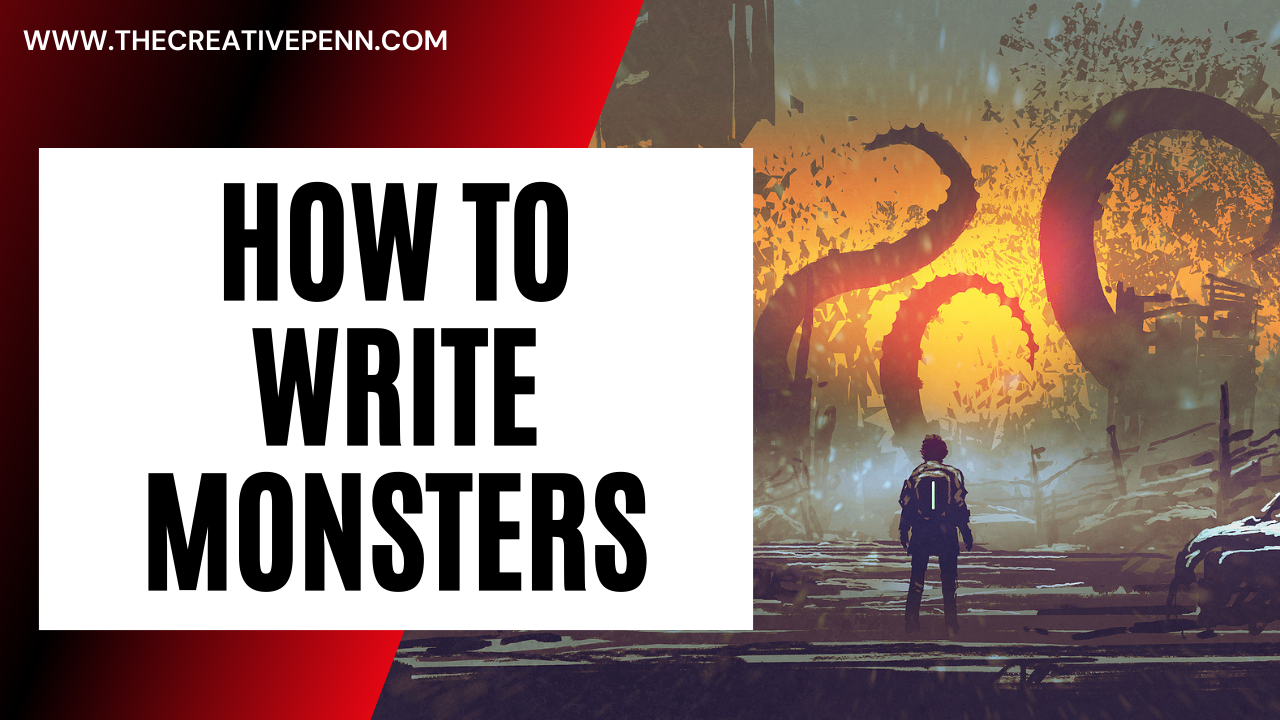
In the intro, I discuss Brandon Sanderson's Kickstarter for the leather-bound edition of Way of Kings and why creating beautiful physical objects should be part of our indie maker movement, and check out this interview on bookbinding with Lisa Van Pelt . Plus, why we need to put our lessons learned from the pandemic into action now instead of waiting for ‘the end,' whatever that might mean!
Also, I have re-recorded my tutorials on how to build an author website , install Author Pro theme (which I use for JFPenn.com ), and also how to set up your email list with ConvertKit . I've also updated the Author Blueprint which you have access to on my email list or you can sign up here .
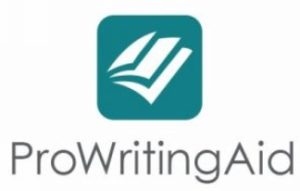
Philip Athans is the New York Times bestselling author of Annihilation , and a dozen other books, including The Guide to Writing Fantasy and Science Fiction . He's also an editor, professional speaker, and writing coach. Today, we're talking about his book, Writing Monsters: How to Craft Believably Terrifying Creatures to Enhance Your Horror, Fantasy and Science Fiction .
You can listen above or on your favorite podcast app or read the notes and links below. Here are the highlights and full transcript below.
- What is a monster ?
- How monsters are part of our human evolution
- The importance for humans of fighting a common enemy
- How the monster in a story can bring out a character’s true nature
- Monsters as metaphors
- How do we create unique monsters?
- When should you reveal your monster?
- Multiple streams of income as a writer. “Walk through the door that's open.”
- Licensing intellectual property as a source of income
You can find Philip Athans at AthansAssociates.com and at the Fantasy Authors Handbook and on Twitter @PhilAthans
Transcript of Interview with Philip Athans
Joanna: Philip Athans is the New York Times bestselling author of Annihilation , and a dozen other books, including The Guide to Writing Fantasy and Science Fiction . He's also an editor, professional speaker, and writing coach. Today, we're talking about Writing Monsters: How to Craft Believably Terrifying Creatures to Enhance Your Horror, Fantasy and Science Fiction .
Welcome, Phil.
Philip: Thank you for having me. It's great to be here.
Joanna: I'm so excited about this. I bought the book ages ago and then I read it quite recently, and I was like, oh, my goodness, I really want to talk to you, because I feel like there are some of us who get excited about monsters, and everyone else has now turned off the show anyway, so we can just get into it. So, let's start with definition.
What is a monster anyway, and what are their characteristics that are most important?
Philip: For me, and this was really what Writing Monsters is mostly about, is monsters as a supernatural force. So this isn't really a book about the serial killer that everyone thinks of as a monster, or someone like Hitler was a monster, things like that.
Using that term to apply to a person as a way to dehumanize evil and say that these are somehow not humans anymore, somebody who can do these terrible things, it's a way for the rest of us to sort of push away and say, ah, that's not in me, I don't have that in me.
And hopefully, I don't believe that I have an inner Hitler. I'm very happy to report that. I think most people really don't go anywhere near to that territory.
But at the same time, he wasn't a monster created in some other dimension or something like that. He was a person who did terrible things. So, for writing monsters, this was really about for horror authors, supernatural horror authors, fantasy authors, science fiction, etc., where this monster is this living thing, and you can't see me do air quotes around living, so is it some kind of mechanical creature or something like that, that we're afraid of, but we don't understand it?
I think if you looked at just a photograph of a great white shark, it's the scariest monster I can even think of, so it's just absolutely terrible. But we know what sharks are. There are books written about them. The Discovery Channel does a whole week of shark documentaries every year. So we understand it as an animal, but I think if you had never seen one, never heard of it, that would be a monster, a very dangerous thing and I don't know what that is.
Joanna: Right. So it's scary, and we don't know how to connect with it in that we would do with another person. So do you think the fear is an important aspect? Because of course, there's the classic, is it Pixar, the ‘Monsters, Inc.' I mean, those are technically monsters, but they're not scary.
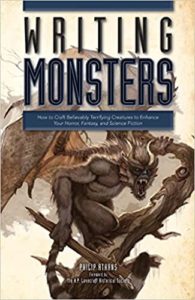
Are they created in the same way?
Philip: I think so. But what was fun about ‘Monsters, Inc' and about like the monsters on ‘Sesame Street,' things like that is we're taking something that's scary and then we're making it not scary.
Once you get to know those monsters as people, which I thought was really brilliant in ‘Monsters, Inc,' that, the idea is that they're the scary thing that lives in your closet. But they're actually just regular guys who are going to work and that's a thing that they do.
They work for, of course, the evil energy company, which is pretty easy to imagine, that the energy industry is willing to do anything. And so, that was that they turned the idea of a monster upside down. It was this living thing that we're afraid of but, don't understand and we're afraid of it because we don't understand, but once we got to know them, we realize, oh, wait a minute they're not.
Joanna: They're not so scary.
Philip: They're not monsters. They're the people.
Joanna: Obviously we're going to focus on the scary ones. Let's just talk about why we love monsters. Clearly, you and I are fans of monsters and things that are terrifying.
Why are monsters so common in myth and legend as well as fiction?
Philip: I wrote about this a lot in Writing Monsters , and in other places, I think that for me it goes back, or puts us back in touch, monsters do, with the predator-prey relationship, which we've really, as humans, have exited that.
That's probably the main thing that we have accomplished as a species is to lift ourselves out of that. So, sure there are people who go hunting as a hobby, but there really isn't anyone who depends on that anymore.
Since the invention of agriculture, and with the bow and arrow, the ability to kill at a distance, we've stopped being… I don't know about you, I'm in quarantine here for the COVID virus. But let's say I had a job that took me outside of the house, there might be a lot of things that I'm afraid of out in the Seattle area, but being attacked by a predatory animal is not one of them.
There was a small bear that wandered into my backyard, and the dogs went crazy, but we just sort of took cell phone pictures of it and thought it was really fascinating. But I have never been afraid that somewhere between here and the supermarket, I'm going to be jumped by a tiger and killed.
So what monsters do is they remind us of that, that they say, what if there is something out there that breaks through this giant evolutionary hurdle that we've made, and now all of a sudden, I'm the prey?
Certainly, that's what ‘Jaws' was all about was this idea that there actually is a wilderness, and that's the ocean, that once you step in there, you're way, way out of your element, and there is stuff in there that could actually eat you, and doesn't know, hey, that's a human, hands off.
So I think that's really the trigger that says this is something to be afraid of, because this is going to eat me, and it's not understanding that I have some sort of special privilege.
They also story-wise give us a common enemy to struggle against, is that everybody teams up against the zombies. ‘Dracula' was really about let's get some people together to combat this thing that came to England and is threatening our women, and things like that.
And then again, it plays on the fear of the unknown. This is something we don't know. We haven't identified this yet, we haven't tamed it, we haven't hunted it to extinction or to near extinction. I know all of the animals in my neighborhood, and so if I see a raccoon, I'm not thrown into spasms of terror. But monsters are the thing that gets added to that comfortable world.
Joanna: I wonder if now, as you say, we're far removed from when originally tales were told and we were going hunting and all of that back in the day, but some kind of collective memory or collective unconscious as Carl Jung would have said, of this fear that we're born with.
Things in the dark and things hunting us, and is it that we like reading, I like reading the, kind of, cryptid books, and I love Jurassic Park and all of that type of thing.
Is it somehow cathartic that we're experiencing it in that way, without obviously having to face something in real life?
Philip: Sure. I think there's so much of entertainment is that I'm experiencing this thing that in real life I would avoid in any way I possibly could. And so there is the sense of I'm scared, but I know I'm not in danger in any way sitting here reading a book, or sitting in a movie theater.
We get on roller coasters to experience what it would be like to be in this out of control vehicle, but we know that it's not out of control, that it's on tracks, but it just feels like it's scary for a second.
That sort of a thing that we're looking for is what would it be like to be hunted? What would it be like to be in a position where you're out of control completely, and all of the standard things that we feel like we can rely on are sort of stripped away from us.
Joanna: I like the fact that you said common enemy, and I do read quite a lot of horror. I don't really watch horror movies, but I read quite a lot of horror, and that common enemy idea, in that, and I think Jonathan Maberry says “it's not about the monster, it's about the people fighting the monster,” and the hope that we can maybe kill the monster is that common enemy.
Do you think that's really important in horror particularly?
Philip: It can be. And that's one of the things I love about monsters is that they come in so many different varieties, not just in, this is sort of the furry monster or the slimy monster, that kind of thing, physically, but they mean different things to the characters in each story, and they mean different things to each individual story. So that idea of let's get together against this common enemy, that really drives books like It by Stephen King.
But then a lot of times, those monsters are the thing that brings out the good and evil in us, so that a zombie horde in something like Night of the Living Dead or The Walking Dead is really a natural disaster that's happening. And the story is in who is the person who's going to try to take advantage of that to seize power and become somebody like the Governor in The Walking Dead .
Who's going to rise to the occasion and become the hero, when faced with this horde of zombies that don't care, they don't have a plan, they don't have a strategy, there's not some kind of political party that you can argue against. They're just a thing that moves through, like a hurricane moves through, or a tornado moves through your town.
There's no reasoning with it, it's just, am I going to be the person who runs into the burning building to save people, or am I going to be the person who owns a gas station and all of a sudden raises the price to $20 a gallon because I think I can? Does that monster bring out the good or evil in people?
And using Stephen King as another example, because why not, right? In The Mist , that's exactly what he does. He throws this collection of Lovecraftian monsters at people trapped in a supermarket, and it's entirely a force of nature. It's some sort of disaster is happening.
And then the people all trapped together then either rise to the occasion or crumble, according to their own inner set of tools and assumptions and prejudices and things like that. So we see them turn on each other, we see them band together and try to help, and be humans faced with the unknown.
Joanna: You do have a great section on monsters as metaphor, so, how do we think about that? If we're planning to write a monster book, like I definitely want to, I have had monsters in my books, but I'm like I'd like to write just a good monster book.
How can we bring that deeper element? Is it easy as you say reflecting on the meaning? Let's take Jurassic Park , because I'm sure everyone's at least seen the movie, if not read the book. The book was much better, obviously. The book was a lot more about chaos theory and things getting out of control, but nature kind of doing that, and the genetic engineering of the monsters was part of that.
Should we be layering in this metaphor level, to bring a deeper element, and how do we do that?
Philip: Sure. I think that really what that idea of monsters as metaphor is it's monsters are that thing that's out of control. And that's really what Jurassic Park was all about, like you said, it's that chaos theory of, ‘We're doing this thing because we can.' We figured out how to clone dinosaurs but no one really ever thought through what does that mean exactly. We're introducing these giant predatory animals into our world, and are we really ready for that?
And I think people in general, humans are pattern-seeking creatures. We look for patterns in everything. It's one of the ways we survive. We can see the pattern in the seasons, and so that allows for agriculture and that kind of thing. So we're always about pattern identification.
When a monster is then thrown into that, this force of chaos, that pattern is interrupted. So our daily lives are interrupted, or these scientists who think, well, we'll do this and then we'll put these genes together and we'll make this creature, and then we'll put it in a cage. Awesome, that'll be great. And then that animal then has its own set of patterns that come into conflict with those people.
Sometimes monsters can be so obviously a metaphor for something. My favorite metaphorical monster has got to be ‘Godzilla,' which, if you've seen the original Japanese Godzilla, the very first one, and not the one that was edited in America and had an American actor stuck in there, that really trimmed out a lot of the political stuff.
‘Godzilla' was definitely, we sort of went on this little adventure, and in that case, it was doing atomic testing, and we roused this thing, this mindless, primitive, barbarian thing, that then just came and literally crushed everything and just destroyed everything, and blasted us with atomic fire breath.
When you sit back and see that as a Japanese movie from the mid-50s, less than, in some case, I really I think it was, I want to say it was like 1954, so less than 10 years after the end of World War II, it's pretty clear what ‘Godzilla' represents. It's the thing that, we poked this thing, and it just destroyed everything, it just literally walks through and burned everything down.
Joanna: I was going to say, because at the moment, I mean, as you say, we're recording this during lockdown, and I feel like, obviously Trump calls it ‘the invisible killer,' and we're all in our homes sheltering from something we can't even see. And I wonder what will come out of this?
It's almost on the nose to write a pandemic thriller. But, what will come out of it as a monster? There are invisible monsters and stuff like that.
Is it a case of taking a theme or taking the idea that we want to write about, and then creating something that might represent that in a type of monster?
Philip: I think that that's really what zombies are, in particular. It's a plague, it's essentially an invisible force behind there, that this thing bites me and I'm infected in some way. And everyone who's bitten by a zombie is infected by that.
Vampires tend to be the thing that sucks your blood and infects you with this whatever it is, turns you into a vampire, or turns you into a slave, an undead slave. I think that there has been this sense of the plague monster for really ever, certainly going back to The Black Plague and that time, and this idea that evil is passed from person to person, and that there can be this invisible force that we don't even understand that transforms us into monsters and then kills us.
So I think well before the coronavirus, this has been part of horror literature at least, and fantasy and science fiction as well. What if?
Michael Crichton, who also wrote Jurassic Park , wrote, one of his first novels, I think it was his first novel, was The Andromeda Strain , which imagined a virus from space coming down on a satellite, and the scientists trying to figure out what this thing even was, and prevent it from spreading all over the world. So I think the idea of an out of control pandemic has been in that consciousness for a really long time.
Joanna: Absolutely.
When we're constructing our monsters, what are the important things that we need to decide upon in order to construct the rules of the world?
Philip: I think for starting out with everything, and this is what I harp on with authors all the time, it is, why is this in the story in the first place?
I work with a lot of authors who are at varying stages of their careers and experience levels, and most of the first-time authors, or people who are just sort of starting to get into it, tend to want to throw stuff in, like we're just going to put in as many elements as we possibly can.
And so for me, the really, question is why? Why is the monster in the story in the first place? If it's just there because you think monsters are fun, well, so do I. I think you could maybe sell that to me, but most people are going to wonder why all of a sudden there's a monster.
So how does the monster actually move the story forward? Is it an obstacle to be overcome? Does it demand something of the characters? Does it say, ‘This is your opportunity?' You're being forced into a position of either standing up to be the hero or laying down to be the villain or the victim?
Does it play on our fears of what, exactly? Is it the predator-prey relationship that I think everyone is sort of, every animal certainly, is built-in, has this built-in fight or flight response and has a sense of, ‘What is that thing? Is it going to bite me? Is it going to eat me? Is it going to poison me?' And so does it just play on that?
Or, in some cases, like H.P Lovecraft, for instance, is still being read today because he wrote stories where the monster was not something that you could be, you couldn't find the weakness in it and then figure out, ‘Ooh, it's the silver bullet. Now we've got that sorted.'
That played on our fear of, hey, maybe we're not the masters of the universe. Maybe we don't have this thing all locked out. Maybe we are on this tiny little rock in this giant infinity, and out there are things that are just so beyond us that we'd have to only hope that they don't notice us.
Joanna: Yeah. Keep quiet.
Philip: Right. And so a lot of it is looking back at history and where was the culture at that time, and the monster will start to inform, or be what is really informed by that time.
100 years ago, Lovecraft was in a world that was becoming aware of astronomy and cosmology in a way that 100 years before that, they didn't necessarily have a grasp on. And it sounded pretty scary. It was pretty rough.
He was starting to understand that maybe we really are just kind of hanging out there, and there could be anything out there on the horizon, and being a bit of a xenophobe in general, that really, I think that really worked at his fears of maybe we're not in charge. Maybe I'm not the guy who can control the world around me.
What do you want people to be afraid of, essentially? Do you want people to be afraid of something like the pandemic, that has some people clearly behaving badly and some people clearly trying to do the right thing, and most of us are caught in between trying to figure out our place in this?
But then beyond that, what the monster can do and what it can't do? What its weaknesses are? Especially for a story that hinges on, ‘This is a problem we have to solve.' And I did write about that a little bit in Writing Monsters , that there are some stories, a lot of monster stories, in fact, that sort of begin as a horror story.
Jaws is a great example of this, because we don't, for about half of the movie, we don't see the shark, we see the results of the shark. We see the people being pulled underwater. It pulls the dock away from the beach and so on. And we know that something terrifying is under there.
And then, once they identify what this is, and they find the fishermen and they all get on the boat and they go off to actually kill the shark, the whole movie changes, and this is like a great testament to Spielberg as a filmmaker. The music changes from that ominous pulsing to this sort of triumphant kind of almost bugles and sea shanties.
It stops being a horror movie and it becomes a maritime adventure story. Is that what you're going for? The monster is terrifying until we realize, ‘Aha, this is what we do,' and then it turns into an adventure story.
To some degree, the movie Alien is a horror story where a monster that is flipping that predator-prey relationship. So now, something that we can't kill is hunting us. It's taking away our natural weaponry. We can't just shoot it, or its blood will destroy our ship and we'll all die and things like that.
And then Aliens , the sequel, is the second half of Jaws . It's like, okay, now we know what this thing is, what it can and can't do. Let's go kill it. And of course, complicated by the fact that there's now 500 of them or something.
So I think that is sort of two movies that, put together, is it's sort of equals Jaws . The monster is now identified. What do we do? They're not less scary necessarily. The fact that there's lots more of them make them scary.
Joanna: I really like that, because you've definitely shown different things there in terms of, is the monster something we already know how to kill, and now we just have to go kill it?
I even think even, like Wilbur Smith, for example, those are action-adventure books, but he often has wild lions and things come and kill people. So you know what the monster is, but what you're saying is also there's these monsters where we don't even know.
And the Lovecraft stuff is interesting, because you've given a number of examples there. So you say Lovecraft, people think tentacles, right? They think Cthulhu, and then you say Jaws and you think big teeth, and we say Jurassic Park and people will have the dinosaur.
With all of these archetypical monsters in our heads, how do we create something new or original when so much has already been done?
Philip: First of all, all of those things that have been done, or we'll say most of those things, I tend to have kind of a zombie aversion, at least now, I think, okay, like I get it. But that's an interesting example of one work.
The movie Night of the Living Dead that then created an archetype. That's a relatively new concept I think. But for things like, whether it's a vampire or a werewolf or a dragon, something like that, those are all free for everybody to just grab from mythology and legend and fairytales and so on.
But one of the things I talked about in the book and elsewhere is this idea of thinking of it as a recording studio mixing board, so that if you are, you have a werewolf story that you want to tell, now the challenge for each individual author is to make that my werewolf. Which is different from your werewolf, which is going to be different from Stephen King's werewolf, and so on.
Everybody has a sense of what this thing is, what it can and can't do, how to kill it, and so on, so start changing that. Mix that up a little bit, and just sort of do your best to make it your own.
I think humans are just natural monster-making machines. It's something that's really in our DNA. It's kind of what, it goes to our survival instinct, that we can't just be a good predator, we have to be the only predator. When we move into an area, we make it our own.
We really don't allow for hunting, in that, no hunting allowed in my suburban neighborhood. So when people see coyotes, it becomes a problem. Not because I'm worried that a coyote is going to attack me, but I have small dogs. Like, get out of here, coyotes.
And I think it's something that is sort of ingrained in us, because I think it's better from a survival standpoint to imagine that a monster, if there's something moving in the darkness you can't see and you hear something moving around, it's better to imagine that that's a monster and be ready to defend yourself, than assume it's a squirrel and be taken by surprise by a leopard.
Joanna: That brings us to something else, which is the unseen monster. And you mentioned Stephen King's It , and obviously for anyone who hasn't read it, we're no spoilers, but we don't see the actual thing until nearer the end.
I always found that it wasn't as scary as what I had imagined. And perhaps, is that a truism as well, that if you reveal it too soon, it's not as scary, unless I guess we've seen it in action, like we have with Jaws for example, you see the body parts, you don't see the monster.
Is that be a tip for writing? Keep it hidden, or when do we reveal it?
Philip: Absolutely. And that's a big part of the book, actually, is that idea of staging the reveal of the thing. So if it's just, right away it jumps out and you've described it in extreme detail, and characters quickly or immediately figure out, and I've seen this a lot in fantasy, in particular in science fiction, where the characters instantly identify what it is, as though they're walking around with the monster manual.
Then that's a very different sort of story. Now that is essentially, we've been attacked by a leopard, or we've been attacked by a shark. Now we know what to do. And that can still be an entertaining story, it can still be a great adventure story. But it really stops being a monster right away.
Staging this thing in, like they did in Jaws , which, of course was a great happy accident, that the mechanical shark didn't work and they didn't have it available for most of the filming of the movie, so he had to figure out how to not show the shark, and it ended up being a great accident that made that movie a thousand, a million times better.
The less you show the better, right? And just show it the effect of the thing. What is it actually doing? And you want to stage it a little bit at a time, a little bit at a time.
You definitely see that in all of the most effective horror movies, in particular, like Alien , you only see sort of little bits of things, and it actually ramps up. It's the face hugger, and then it's the little thing that they think they're looking for is about the size of the cat, and then it's this big thing that's moving around in the air ducts, and they can only see it in little snatches, and then don't really understand what it's doing and things like that.
Exactly how you stage that monster in really depends on the story that you're telling. Is it just an adventure about let's fight some monsters? Then great, right? That's the dungeons and dragons approach. It's about the fight and it's about the number of monsters that you throw in there.
And again, I'm in on that, that's great. But if the story depends on the one monster continuing to be scary throughout, then you want to put it in in teaspoonfuls as you go.
Joanna: Fantastic. So, we're going to change direction, but the book is Writing Monsters so for everyone listening, I think it is brilliant. I've got it here on my desk. It's got lots of pages turned on it, and I'm like, oh yeah, that's great, that's great. I want to write tons of monster book.
I didn't upfront ask about you and how you got into writing, but I wonder if you'd tell us a bit more about your ecosystem, because many people listening want to make a living with their writing. So, tell us, like, what is your career, because you do so many things.
What does your career look like right now, and what are your multiple streams of income?
Philip: Right now it seems like a little bit of everything. I guess we can kind of work our way backward, but right now I'm a freelance editor and writing coach, and I work with individual clients.
Again, through a huge range of experience levels. From people who are literally just starting out, to veteran authors who've been doing it for a long time. And then, I have some corporate clients and do some consulting work there.
I write a lot about writing, and I've been teaching online courses in writing. Those are in a transition period where I'm shifting over to a different host for those. So keep an eye on my social media for when those are going to start ramping up, hopefully by the end of this year.
I think if you want to really do this for a living, it is certainly possible to be the next J.K. Rowling and just sort of scribble out this great book that is rejected X number of times until somebody says, ‘Hey, this is really good.' And then voila, you're a billionaire. The chances of that happening are super slim.
I think the fact that you can count on one hand the number of really huge franchise authors who are working at any given time is a pretty good tell that that's not just something that happens. It's not the automatic thing, I've written a book, so therefore I'm a big famous author and a millionaire.
What I try to advise people as much as I can is think of yourself as a content provider. If you're a storyteller first, then yes, definitely be writing that novel, but also be writing short stories, and write anything you want to and anything you can, and get it out there in any way possible.
I think we all have to have a day job, and but if you do have to have a day job, can your day job be like my day job, which was an editor? I'm basically doing what I do at work and at home and everywhere.
I know a lot of writers are coming in through the video game business, which has got a big, which is so huge, and it has a big need for writers. It's a different kind of writing, it can be hard, and it's hard to find your own voice in those a lot of times, but I think it's a great way to make a living while you're also writing that great American novel.
And that's what I have been doing at least for the last 10 years since I left Wizards of the Coast, was just what might interest me. I do ghostwriting. There are books out there that you would never know, and I'm contractually obligated not to tell you, that I had anything to do with. And I think that's great and there are a lot of people who are like, ‘No, I would never do that.' Well, I would try it, right?
Joanna: Pays the bills.
Philip: Exactly. And that's the thing. And now I'm making a living doing this. I don't also wait tables, so, I used to be, “You know, well, I'm a writer, but I'm actually managing a record store.” Which was a pretty cool job. That was really what I was doing most of the time.
I think what you do is you walk through the door that's open. And if you approach this as, ‘I'm either going to be the next George R.R. Martin or forget it,' then forget it. Because the chances of just willing that into place is essentially zero.
Joanna: And it's interesting that you brought up George R.R. Martin, because of course, he's an older guy now, and he's been writing for decades. So, he only became in inverted commas, ‘George R.R. Martin' when the TV show took off, and that's when he became a sort of mega-brand name, author, famous outside of a particular niche. So even his career is he got super famous quite late.
I love your business model. I'm very similar. I have lots and lots of things. But you mentioned Wizards of the Coast. From your website, Athans and Associates, you also have worked with Dungeons & Dragons and Pixar, and I'm like, these are some awesome companies around licensing.
And licensing, like you mentioned gaming, licensing intellectual property seems to be one of the ways in which we can move into bigger than, just say, self-publishing an ebook on Amazon, which is where many people start.
Any thoughts on this positioning IP for licensing and thinking much bigger?
Philip: That can be really, really difficult as well, because, and absolutely this is true that everyone wants to see their fantasy novel or their fantasy series become the next Game of Thrones . Why wouldn't you? You want your science fiction series to be The Expanse .
That's definitely less impossible now than it was 10 or 15 years ago or so, because there's so much content being created. And I think that's very exciting times for everybody. There are opportunities now, with all the sort of TV streaming and things like that, that didn't exist in the rarefied Hollywood atmosphere of 20 years ago.
But still, it's such a distant possibility, really the best thing to do for any author is just concentrate only on the one thing that you have any control over whatsoever, and that's the quality of your work.
None of us have any control over the coronavirus and what that may or may not be doing to the publishing business, what the publishing business is going to look like after this. We certainly don't have any control over the global economy, things like that.
We have no control over trends and what all of a sudden is going to seem dated or what is going to be the next big thing. But we do have control over the quality of our writing, so start with that. And if you've written the best book you can possibly write, readers will find you. And after the readers find you, maybe movies, video games, and all that stuff will come with it.
That's exactly what J.K. Rowling and George R.R. Martin did. They wrote the best books they possibly could. And the audience found them.
Joanna: They also wrote really, really long fantasy series, so that might be another tip.
Philip: But again, is that, I'm not sure that that trend. Some of these things are unreproducible. J.K Rowling had some really interesting timing issues, at the beginning of the internet, where kids were talking to each other in ways that they weren't able to before. It was possible to build buzz in ways that didn't exist in, literally six months before that.
And then George R.R. Martin was plucked out of, ‘Hey, it's actually possible to make dragons that look convincing.' It's actually possible with digital effects to do this, and make a TV series that looks like this, where so much science fiction and fantasy, in particular, had always sort of sat on the shelf because how could we possibly realize this? How could we possibly make this into a movie? I just don't know how to make these special effects.
Joanna: Exciting times for those of us writing monsters. Phil, that was great.
Where can people find you and everything you do online?
Philip: Well, follow me on Twitter. That's @PhilAthans. And then my blog is Fantasy Author's Handbook. That's updated every Tuesday. It's fantasyhandbook.wordpress.com. And then, if you want to find me for editing, coaching, any of that good stuff, it's athansassociates.com.
Joanna: Brilliant. Thanks so much for your time, Phil. That was great.
Philip: Thanks for having me.
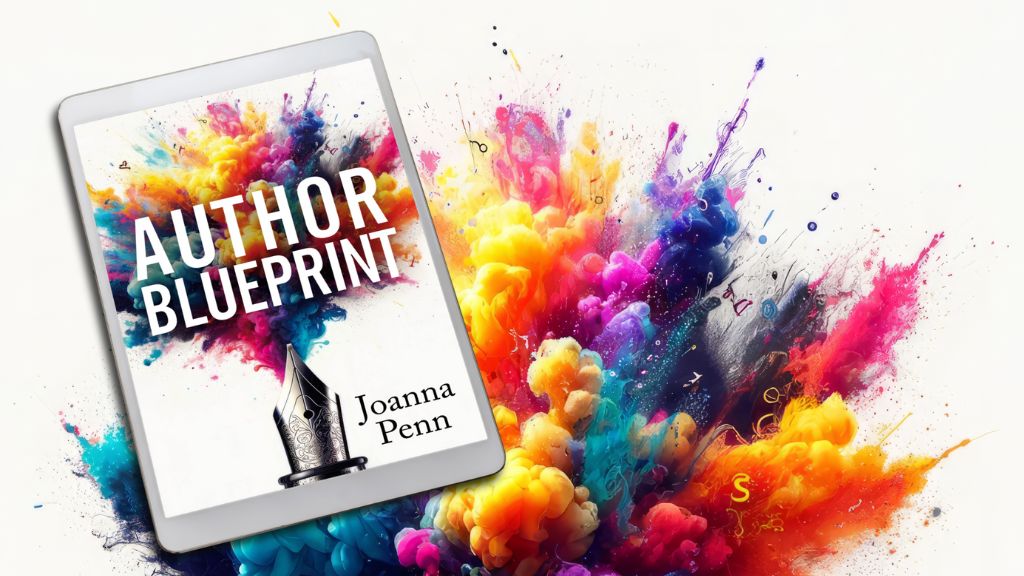
Reader Interactions
July 24, 2020 at 8:06 am
Thank you for this. I found it very interesting. I’m working on a story about people who are monsters discussed in this podcast. I want to keep some of the atmosphere of mystery and fear about them, while also being interesting characters who a reader will root for or against.
July 27, 2020 at 2:49 am
Great interview and loved the topic. I thought it was especially interesting how Philip pointed out that in some of the best monster movies/books the “what” isn’t clearly defined until very far in…and how that lends itself to additional fear on the part of the viewer/reader.
Lots of interesting tidbits in this episode. I appreciated Philip’s honesty about making a living as a writer and how that often requires more than one stream of income. He has some very interesting-sounding projects and streams, which is nice to hear.
Thanks, Joanna, for the introduction to another great author to follow and connect with!
July 27, 2020 at 3:34 am
Glad you found it interesting!
July 30, 2020 at 2:00 pm
Thank you for a very interesting podcast. Playing on people’s fear of the unknown is a great element to use for enhancing your monsters. However, monsters don’t always need to be “mysterious” in order to be scary. The way I see it, there are at least 4 different things people are afraid of:
– the unknown/ mysterious (monsters can either be gradually revealed to keep the mystery, or they can incorporate something unknown – zombies are scary because they play on our fear of death, which is probably the ultimate unknown thing there is) – the grotesque (putting your hand into a bowl of worms and spiders is very scary, even if they are not dangerous and we know everything there is to know about them…) – the predatory (as you brilliantly pointed out with “Jurassic Park” and “Jaws” – these monsters play on our evolutionary fight or flight or play dead instinct) – the familiar
The last point is perhaps the most interesting. It’s a fact that your murderer or kidnapper etc. is likely to be one of your own relatives. In German, we have a word called “heimlich”, which in one sense can mean “homely, cozy”, and in another sense can mean “secretive, uncanny” – the only word I know of which can be used as its own antonym. One of the best ways to induce fear in a novel is to take something familiar and change small things, so that it becomes eerie and uncanny. For example, that’s the reason vampires usually look almost human – in the story “Dracula”, we initially think Count Dracula is a human, but small inconsistencies gradually add up to reveal his true monstrous nature.

Leave a Reply Cancel reply
Your email address will not be published. Required fields are marked *
Notify me of followup comments via e-mail
This site uses Akismet to reduce spam. Learn how your comment data is processed .
Connect with me on social media
Sign up for your free author blueprint.
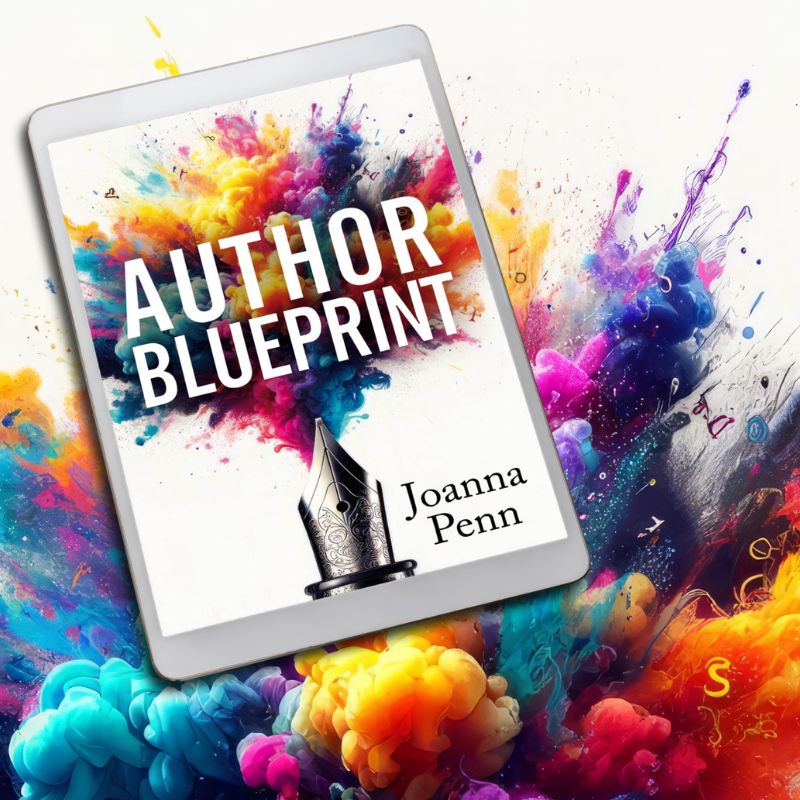
Thanks for visiting The Creative Penn!

Monster Writing Prompts: Craft Tales of Creatures
My name is Debbie, and I am passionate about developing a love for the written word and planting a seed that will grow into a powerful voice that can inspire many.

Monster Writing Prompts: Craft Tales of Creatures
Unleash your creativity with monster writing prompts, discover the world of monsters and unleash your imagination with these writing prompts, why choose our monster-themed writing prompts, explore the origins of monsters: digging into mythology and folklore, delve into the rich origins of creatures: unveiling the depths of mythology and folklore, delve into the fascinating world of mythology and folklore to find inspiration for your creature creations, creating compelling monster characters: tips and tricks, learn the art of crafting captivating monster characters that will leave your readers enthralled, unleash your creativity with captivating monster characters, creating vivid monster characters, utilizing metaphors and similes, master the art of descriptive writing to bring your monstrous creations to life on the page, building suspense and tension: keeping your readers on the edge of their seats, creating unforgettable suspense: engaging your audience from start to finish, learn how to build suspense and tension in your monster tales, keeping your readers engaged and intrigued, conquering writer’s block: overcoming challenges in monster writing, overcoming challenges in monster writing, discover effective strategies to overcome writer’s block and unleash your creativity when writing monster stories, polishing your monster masterpieces: editing and revising tips, refine your monster tales with expert editing and revising tips to create polished and captivating stories, crafting memorable endings: leaving a lasting impression, explore techniques for crafting satisfying and memorable endings to your monster tales, leaving your readers wanting more, master the art of crafting irresistible endings for your monster tales, frequently asked questions, to conclude.
There’s an entire world of monsters waiting to be unleashed from the depths of your imagination! With our collection of monster writing prompts, you have the chance to create captivating tales of creatures that will leave readers on the edge of their seats. Whether you’re a seasoned writer or just starting your literary journey, these prompts will inspire you to craft unique and unforgettable monster stories.
In this collection, you’ll find a vast array of creature-inspired writing prompts that will push your creativity to new heights. From mythical beasts to modern-day monsters, there’s no limit to the terrifying and fascinating creatures you can conjure. Dive into the world of monster writing and let your imagination run wild as you explore the depths of the supernatural and the unknown. Unlock the potential of your storytelling abilities and bring to life creatures that haunt nightmares and captivate imaginations.
Embark on an adventure where mythical beings clash, legendary monsters roam, and terrifying creatures lurk in the shadows. Explore the challenges these monsters face, the emotions they evoke in others, and the impact they have on their surroundings. With our carefully curated prompts , you’ll have the opportunity to develop unique storylines, intricate character backgrounds , and thrilling plot twists. Whether you choose to create a monstrous protagonist or a fearsome antagonist, these prompts will ensure that your tales of creatures are nothing short of extraordinary. So grab your pen, embrace the unknown, and let the world of monsters inspire you to craft captivating tales that leave readers both trembling in fear and longing for more.
Are you ready to embark on an epic journey of imagination? Look no further than our collection of Monster Writing Prompts! These prompts are designed to inspire and challenge your creative abilities, allowing you to create fantastical stories that will captivate readers of all ages.
With our Monster Writing Prompts, you have the power to conjure up creatures that dwell in the deepest corners of your mind. From fearsome dragons to mischievous goblins, each prompt presents a unique opportunity to bring your wildest ideas to life. Let your imagination roam free as you venture into uncharted realms, where anything is possible.
- Challenge yourself with prompts that delve into the origins and characteristics of mythical beasts.
- Explore the untold stories of legendary creatures that have been passed down through generations.
- Imagine encounters with extraordinary monsters in unexpected places, like bustling cities or serene landscapes.
- Craft tales of unlikely friendships or epic battles between powerful creatures.
Dive deep into the realm of fantasy and let the magic of storytelling take hold. Our Monster Writing Prompts will push the boundaries of your creativity, encouraging you to think outside the box and weave narratives that will leave readers craving more. So, grab a pen, summon your imagination, and let the monsters come to life on the pages of your stories.
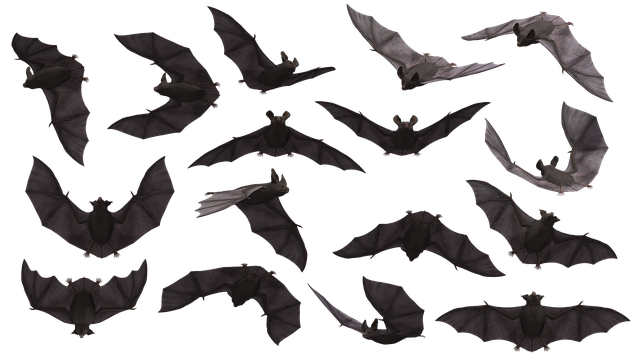
Are you ready to embark on an extraordinary journey into the world of monsters? Prepare to let your imagination run wild as we present you with a collection of captivating writing prompts. These prompts are designed to transport you to mysterious realms where fantastical creatures roam, igniting your creativity and allowing you to weave tales beyond your wildest dreams.
Delve into the depths of your imagination and conjure up epic stories featuring mythical beings such as fearsome dragons, mischievous sprites, and enigmatic sea monsters. With these writing prompts, you have the power to bring these creatures to life, giving them unique personalities and captivating backstories. Unleash your storytelling prowess as you describe their appearances, habitats, and even the interactions they have with humans. Whether you choose to craft a thrilling adventure or a heartwarming tale, the possibilities are endless.
- Unlock unlimited creativity: These writing prompts act as a portal to a world limited only by your imagination. Let your creative juices flow and discover new realms of storytelling.
- Enhance writing skills: By engaging with these prompts, you’ll improve your ability to create compelling characters, build intriguing plotlines, and develop immersive settings.
- Explore diverse monster archetypes: From legendary creatures ingrained in folklore to entirely original monsters of your own creation, you’ll have the chance to invent and explore a wide variety of captivating beings.
- Ignite your passion for storytelling: These prompts are sure to reignite your love for writing, allowing you to escape into a world where anything is possible.
So, what are you waiting for? Grab your pen and paper, or fire up your computer, and immerse yourself in a captivating adventure through the realm of monsters. Unleash your imagination and let your creativity soar!
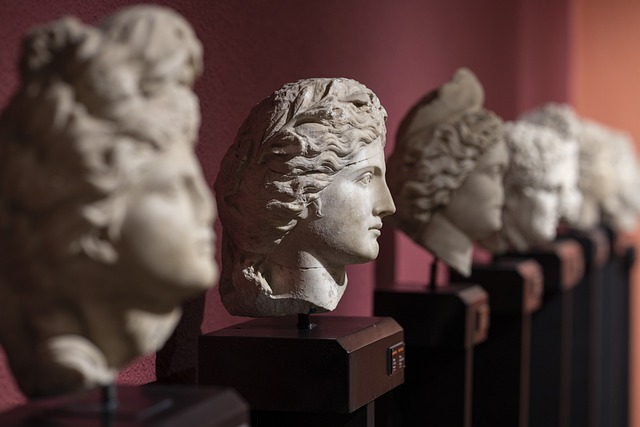
Embark on a captivating journey where the boundaries between reality and imagination blur – a realm where mythical creatures roam and tales from ancient folklore come alive. Prepare to immerse yourself in the enchanting universe of monsters, as we dig deep into the realms of mythology to unveil their fascinating origins.
Mythology and folklore from cultures across the globe offer a tapestry of captivating stories about creatures that have both terrified and captivated humanity for centuries. From majestic dragons and mysterious sphinxes to mischievous spirits and fearsome giants, each culture has its own unique set of legendary beings that have left an indelible mark on their collective consciousness.
Uncover the astonishing connections between these mythical creatures and the cultural beliefs that shaped their existence. Discover how ancient civilizations wove tales of monsters into their religious practices, moral teachings, and even explanations for natural phenomena. Traverse through the intricately woven tapestries of myth and folklore, where each tale carries hidden meanings and insights into the human experience.
- Gain profound insights into humanity’s collective imagination and the archetypes of fear and wonder that have given birth to a myriad of legendary monsters.
- Unravel the colorful threads of mythology and witness how these ancient tales continue to influence popular culture today.
- Explore the symbolism behind each creature, delving into the cultural contexts that imbue these mythical beings with both awe and terror.
- Unearth the underlying messages and teachings hidden within the folklore-rich stories, providing valuable lessons that can still resonate with modern society.
Prepare to ignite your curiosity and awaken your inner explorer as we embark upon this extraordinary expedition into the origins of monstrous creatures. Are you ready to unravel the secrets behind the legends?
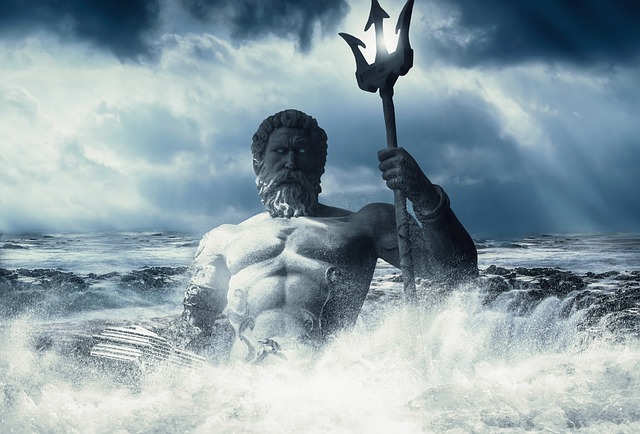
Exploring the rich tapestry of mythology and folklore can unveil a treasure trove of inspiration when it comes to crafting your own unique creatures. From the ancient Greek legends of fearsome beasts like the Hydra and Chimera, to the enchanting creatures of Norse mythology like the mighty Jormungandr or cunning Valkyries, the possibilities are endless. By immersing yourself in these captivating tales, you can tap into a wellspring of ideas and breathe life into your creature designs.
Each myth and legend offers a unique perspective on creature creation, providing you with a diverse array of traits, attributes, and stories to draw upon. By drawing inspiration from these mythological beings, you can infuse your own creations with fantastical elements that resonate with readers or viewers. Perhaps you’ll be inspired by the majestic winged Pegasus, known for its elegance and speed, or the mischievous shape-shifting kitsune from Japanese folklore.
- Unveil the mysterious allure of the sphinx, combining the body of a lion with the head of a human.
- Embrace the power and strength of the thunderbird, a legendary creature that controls the forces of nature.
- Delight in the charm of the kelpie, a shape-shifting water spirit capable of luring unsuspecting victims into its watery domain.
Throughout history, mythology and folklore have captivated humanity’s imagination, revealing extraordinary creatures that have stood the test of time. By embarking on this mythical journey, you’ll open yourself up to endless possibilities, breathing life into your creature creations and infusing them with a touch of magic and wonder.
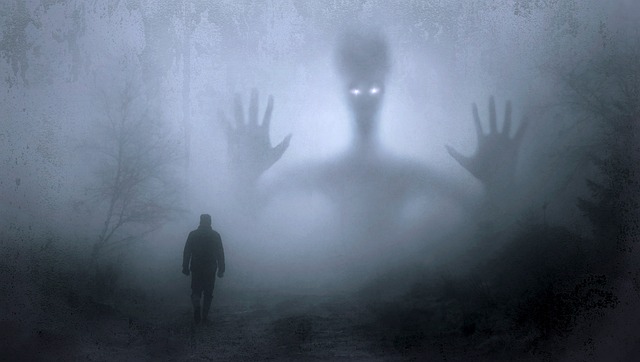
When it comes to crafting monster characters for your stories, it’s all about making them captivating and unforgettable. Whether you’re writing a spooky horror novel or creating a monstrous antagonist for your video game, here are some tips and tricks to help bring your creature to life:
- Start with a strong concept: Before diving into details, have a clear idea of what your monster represents. Is it a physical manifestation of fear, a mythical creature, or perhaps a result of a terrifying experiment? Understanding the core concept will guide your decisions throughout the creation process.
- Design distinctive features: Give your monster a standout appearance that will leave a lasting impression on your audience. This can include unique physical attributes, such as glowing eyes, sharp claws, or grotesque mutations. Incorporate elements that make your monster visually intriguing and instantly recognizable.
- Develop a compelling backstory: Every great monster needs a compelling backstory that adds depth and intrigue. Consider their origins, motivations, and how they fit into the larger narrative. Are they seeking revenge, driven by an insatiable hunger, or simply misunderstood? A well-crafted backstory will make your monster more relatable to your audience, even if they are inherently frightening.
Remember, the key to creating compelling monster characters lies in their uniqueness and the connection they establish with your audience. By starting with a strong concept, designing distinctive features, and developing a compelling backstory, you’ll create monsters that will both send shivers down spines and resonate with readers and players long after the final page or game over screen.
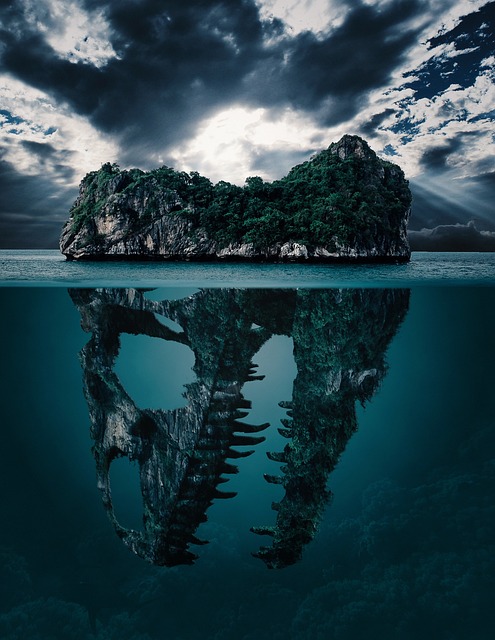
Monsters have always captivated the imagination of readers throughout history. From the terrifying creatures lurking in the shadows to the misunderstood creatures seeking redemption, crafting compelling monster characters can take your storytelling to the next level, leaving your readers spellbound.
So, how can you master the art of creating captivating monster characters? Here are a few key tips to get you started:
- Research and Inspire: Dive into mythology, folklore, or even nature to discover unique characteristics and traits that can make your monsters truly stand out. Draw inspiration from existing monsters, but don’t be afraid to add your own twist.
- Develop Unique Backstories: Give your monsters a rich history and background that influences their behavior and motivations. This will add depth and complexity to your characters, making them more relatable and intriguing.
- Create Physical and Emotional Appeal: Design visually striking features for your monsters, be it fearsome fangs, luminescent skin, or mesmerizing eyes. Additionally, explore their emotional range, from rage-filled roars to fragile vulnerabilities that evoke empathy.
Becoming a master of captivating monster character creation is a journey that requires practice, experimentation, and a sprinkle of imagination. So, embrace the challenge, let your creativity run wild, and unlock an enthralling world of mythical creatures that will leave your readers awestruck.
Mastering the Art of Descriptive Writing: Bring Your Monsters to Life
When it comes to descriptive writing, adding life to your monsters is a crucial element in captivating your readers and immersing them in your story. By mastering the art of descriptive writing, you possess the power to bring your monstrous creations to life on the page.
To create vivid monster characters, consider the following tips:
- Imagery: Use rich and evocative language to paint a vivid image of your monster in the reader’s mind. Describe their appearance, movement, and unique characteristics in detail to make them visually come to life.
- Emotional Impact: Monsters aren’t just about their physical attributes; they also evoke strong emotions in readers. Describe the fear, awe, or disgust that your monster’s presence brings, allowing readers to feel a connection to your creation.
- Sensory Details: Engage your readers’ senses by incorporating sensory details into your descriptions. Describe the sounds, smells, and tactile sensations associated with your monster, enhancing the realism of their existence.
Metaphors and similes are powerful tools in descriptive writing that can add depth and complexity to your monster characters. By comparing your monster to something familiar or creating a striking visual image , you can convey a deeper understanding of their attributes and behavior.
Consider the following examples:
- Metaphor: ”Her clawed hands were as sharp as daggers, tearing through the darkness like a tempest in the night.”
- Simile: ”The monster’s bloodcurdling roar echoed through the forest, reverberating like thunder on a moonlit night.”
By incorporating metaphors and similes into your descriptions, you enhance the reader’s experience, making your monsters more memorable and captivating.
Descriptive writing has the power to make your monstrous creations leap off the page and captivate your readers’ imaginations. By mastering this art, you can breathe life into your characters, settings, and creatures, making them come alive in vivid detail. Here are some essential tips to enhance your descriptive writing skills and create a thrilling experience for your readers:
1. Engage the senses: Appeal to your readers’ senses by vividly describing the sights, sounds, smells, tastes, and textures of your monstrous creations. Use creative metaphors and similes to evoke specific sensations, transporting your readers into the heart of your narrative.
2. Harness the power of vivid language: Choose your words carefully to paint a powerful image in the reader’s mind. Opt for strong and specific adjectives to create a clearer picture. Instead of saying your monster is scary, describe the jagged fangs, blood-red eyes, and menacing growl that send shivers down the spine.
3. Show, don’t tell: Instead of simply telling your readers about your monster’s appearance, let them experience it firsthand. Describe the grotesque features, the slimy touch, or the bone-chilling roar, allowing the reader to form their own emotional connection with your creations.
4. Create a well-rounded monster: Give life to your monstrous creations beyond their physical attributes. Develop their personalities, motivations, and quirks to make them multi-dimensional. Consider their history, desires, and fears, allowing the reader to understand and relate to them in a unique way.
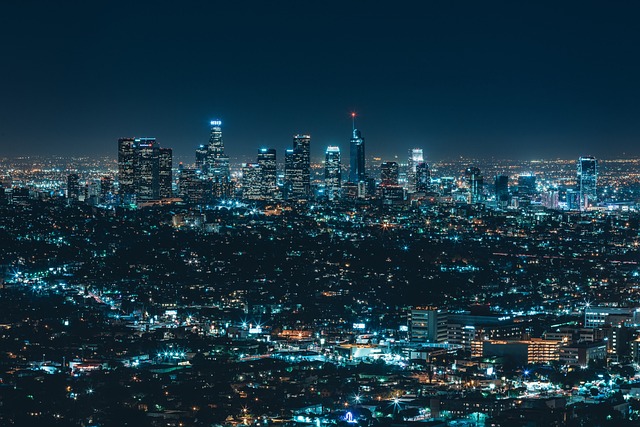
When it comes to storytelling, building suspense and tension is key to keeping your readers captivated and eagerly turning the pages. Whether you’re crafting a thrilling mystery, a spine-chilling horror, or a gripping psychological drama, there are several techniques you can employ to maximize the suspense factor and ensure your audience remains on the edge of their seats.
1. Intriguing Openings: Begin your story with a bang! Hook your readers from the very first line with a shocking revelation, an unexpected event, or a perplexing question. By immediately plunging them into the heart of the action, you set the stage for an intense and suspenseful reading experience.
2. Masterful Pacing: Control the rhythm and tempo of your narrative to build tension effectively. Alternate between moments of high intensity and slower, thought-provoking passages. Allow your story to ebb and flow, creating a rollercoaster of emotions that keeps readers engaged while giving them moments to catch their breath and process the suspenseful events.
3. Foreshadowing and Red Herrings: Plant hints and clues that suggest potential outcomes or future dangers, creating an intriguing sense of anticipation. However, don’t make it too obvious. Throw in clever red herrings to mislead your audience and add an extra layer of suspense. Just be sure to tie all loose ends together by the story’s end to avoid frustrating your readers.
4. Deep Character Development: Make your readers care deeply about your characters. By creating multi-dimensional and relatable protagonists, you establish an emotional connection between readers and the fate of your characters. This investment intensifies the suspense, as readers become truly invested in the outcome of the story.
5. Cliffhangers and Unexpected Twists: Keep your readers guessing with strategic cliffhangers and surprising plot twists. Leave them hanging at the end of chapters, creating a burning desire to know what happens next. Twist the plot unexpectedly, subverting their expectations and injecting a surge of adrenaline into the narrative.
By incorporating these techniques into your writing, you can effectively build suspense and tension, leaving your readers on the edge of their seats and hungry for more. Remember, it’s not only about the destination but the journey itself, and creating an unforgettable suspense-filled journey will keep your readers coming back for more.
Tips for Building Suspense and Tension in Your Monster Tales
Do you want to captivate your readers with spine-chilling monster tales that keep them on the edge of their seats? Building suspense and tension is key to creating an engaging and intriguing story. Here are some valuable tips on how to masterfully infuse suspense and tension into your monster tales:
- Create a Mysterious Atmosphere: Set the stage for suspense by establishing an eerie and foreboding environment. Describe the sinister shadows lurking in the darkness, the creaking floorboards, or the distant howls of unknown creatures. Engage your readers’ senses to make them feel like they are part of the eerie world you’ve created.
- Develop Intriguing Characters: Introduce complex characters that readers can root for or be wary of. Make their motives unclear, their pasts hidden, and their actions unpredictable. Incorporate unexpected twists and turns in their personalities to keep readers guessing.
- Employ Foreshadowing: Drop subtle hints throughout your story that something ominous is looming. Foreshadowing can create anticipation and build tension as readers try to decipher the hidden clues. Whether it’s a cryptic message on a torn piece of paper or a chilling encounter with a mysterious figure, small hints can leave readers yearning for answers.
By implementing these techniques, you can successfully craft monster tales that leave your readers craving more. So, grab your pen and let your imagination unleash a world filled with suspense, tension, and horrifying creatures.

Writing about monsters is a thrilling endeavor, but sometimes, even the most seasoned writers can encounter the dreaded writer’s block. It can be challenging to conjure up unique and captivating creatures from the depths of our imagination. However, fear not! We have compiled some effective strategies to help you conquer writer’s block and breathe life into your monster writing.
1. Dive into research: Immerse yourself in the world of mythology, folklore, and literature. Uncover intriguing tales and legends related to mythical beasts and supernatural creatures. Not only will this provide you with inspiration, but it can also spark new ideas and fresh perspectives for your monster creations.
2. Embrace brainstorming: Set aside dedicated time for brainstorming sessions. Grab a pen and paper, or use a digital tool, to jot down any and every idea that comes to mind. Don’t worry about the feasibility or quality of the ideas initially; the goal is to generate a pool of potential monster concepts. Later, you can sift through and refine these ideas, combining different elements to form unique and captivating creatures.
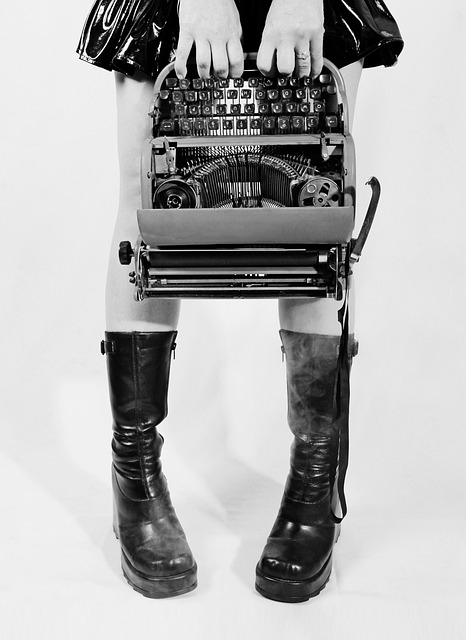
Are you struggling to find inspiration when it comes to writing monster stories? Writer’s block can be a formidable foe, but fear not! We have compiled a list of effective strategies that will help you overcome this hurdle and unleash your creativity like never before.
- Dive into the world of mythology: Explore various mythologies and legends from different cultures. Ancient tales of monsters can be a wellspring of inspiration for your own creations. Whether it’s the terrifying creatures from Greek mythology or the mystical beings of folklore, immersing yourself in these fantastical narratives can spark fresh ideas and breathe life into your own monster stories.
- Experiment with different perspectives: Sometimes, taking a break from focusing solely on the monster itself can provide a new perspective. Try writing from the point of view of a monster hunter or a terrified victim. By exploring diverse angles, you can deepen the complexity of your stories and reveal unique aspects of your monstrous characters.
- Embrace the unknown: Monsters represent the mysterious and unknown, so embrace the uncertainty. Allow your imagination to roam free and create monsters that defy expectations. Tap into your deepest fears and uncover the darkest corners of your mind. By delving into the unknown, you’ll unlock a plethora of ideas that will make your monster stories truly captivating.
Remember, writer’s block is just a temporary setback. By incorporating these strategies into your writing routine, you will conquer the blank page and unleash a world of unimaginable creatures. So, grab your pen, let your creativity flow, and prepare to captivate your readers with your unique monster stories!
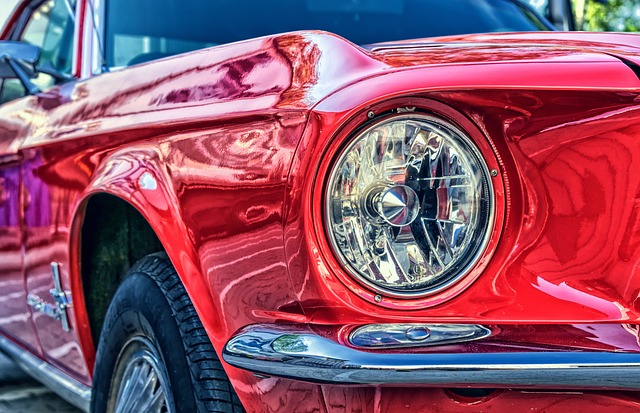
When it comes to writing, the real magic happens during the editing and revising process. Just like polishing a rough gemstone into a sparkling jewel, editing and revising can transform your monster masterpiece into a flawless work of art. Here are some tips to help you refine your writing and take it to the next level:
- Step away and take a breather: After completing your first draft, it’s essential to give yourself some distance from your work. Take a break, indulge in a different activity, or focus on another project. This break allows you to approach your writing with fresh eyes and a clear mind during the editing process.
- Start with the big picture: Begin by examining the overall structure and flow of your piece. Look for any plot holes, inconsistencies, or sections that could benefit from restructuring. Check if your ideas are communicated smoothly and effectively. Remember, editing is not just about catching typos but also about refining the core aspects of your writing.
- Refine your language: Now that you’ve assessed the bigger picture, it’s time to focus on the smaller details. Pay attention to grammar, punctuation, and sentence structure. Eliminate unnecessary words or phrases that hinder clarity. Use tools like a thesaurus to enhance your vocabulary or a grammar checker to catch any overlooked errors.
Editing and revising can be a daunting task, but the rewards are worth it. It allows you to transform a good story into an extraordinary one. Remember, the editing process is not about criticizing your work but rather about refining it. Approach it with passion and persistence, and soon you’ll breathe life into your own monster masterpiece.
Welcome to our comprehensive guide on refining your monster tales with expert editing and revising tips! Whether you’re a seasoned writer or just starting out, we’ve got you covered. Crafting a captivating story about monsters takes creativity and skill, and with our expert advice, you’ll be able to bring your spooky creatures to life in a polished and engaging manner.
Here are some invaluable tips to help you refine your monster tales and make them truly captivating:
- 1. Develop your monster’s backstory: Give your monster depth and complexity by exploring their origins, motivations, and history. This will add richness to your tale and make your readers invested in the creature you’ve created.
- 2. Streamline your plot: Make sure your story has a clear and concise structure that keeps readers engaged. Eliminate unnecessary subplots or characters that distract from your monster’s narrative.
- 3. Edit for pacing: Consider the pacing of your story to maintain reader interest. Build tension by strategically placing suspenseful moments and balancing them with moments of resolution.
- 4. Refine your descriptions: Use vivid and evocative language to bring your monster to life on the page. Engage all the senses and describe its appearance, sounds, smells, and physical sensations to immerse your readers in your world.
With these expert editing and revising tips, you’ll be well on your way to creating polished and captivating monster tales that will leave your readers on the edge of their seats. Don’t be afraid to experiment, revise, and seek feedback to truly refine your storytelling skills. Happy writing!
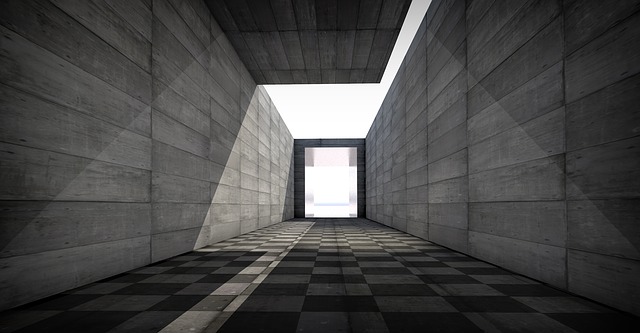
When it comes to storytelling, the ending is just as important as the beginning and middle. Crafting a memorable ending is what leaves a lasting impression on your audience, ensuring that they will continue to think about your story long after it has ended. Here are some tips to help you create endings that will captivate and resonate with your readers:
- Create a sense of closure: A satisfying ending ties up loose ends and provides resolution to the main conflicts in your story. It gives your readers a sense of fulfillment and completion, leaving no unanswered questions or unresolved plot points.
- Embrace the unexpected: Surprise your readers with an unexpected twist or revelation in the ending. This can add a sense of excitement and intrigue, forcing your audience to reevaluate everything they thought they knew and leaving them wanting more.
- Evoke emotional impact: Endings that make your readers feel something are the ones they will remember. Whether it’s joy, sadness, or even shock, aim to evoke strong emotions in your audience through the final moments of your story.
A memorable ending is also characterized by its ability to leave room for interpretation and reflection. Instead of presenting everything on a silver platter, consider leaving some aspects open to interpretation, allowing your readers to draw their own conclusions and engage in post-story contemplation. By keeping your audience guessing and encouraging them to reflect on your story, you create a lasting impression that lingers far beyond the final page.
As a writer, one of the most powerful tools you possess is the ability to leave your readers craving more. The ending of your monster tale is your chance to make a lasting impression, to captivate your audience and ensure that they’ll eagerly anticipate your next installment. Here, we delve into a variety of techniques that will help you create endings that are satisfying, memorable, and that will leave your readers begging for the next chapter:
- Embrace the element of surprise: Keep your readers on their toes by subverting their expectations. Consider a twist ending that reveals a hidden truth about your monster or introduces a new and unexpected danger.
- Create a sense of resolution: While leaving room for future stories, it’s important to provide closure to specific elements of your monster tale. Tie up loose ends, answer lingering questions, and give your readers a sense of satisfaction.
- Leave unanswered questions: Balance closure with a touch of mystery. By leaving some questions unanswered, you can pique your readers’ curiosity and ensure they’ll yearn for more stories in your monster universe.
- Employ foreshadowing: Plant subtle hints throughout your tale that allude to future events or storylines. This not only adds depth to your ending but also sets the stage for future adventures with your captivating monsters.
Remember, the ending of your monster tale is your chance to leave your readers in awe, eager to know what happens next. By employing these techniques, you’ll not only craft satisfying endings but also create a devoted following of readers who can’t get enough of your monstrous tales.
Q: What are monster writing prompts? A: Monster writing prompts are creative cues or ideas that inspire writers to craft imaginative tales featuring various creatures and monsters.
Q: How can monster writing prompts enhance our storytelling abilities? A: Monster writing prompts encourage us to think outside the box, allowing us to explore different worlds and develop storytelling skills. They ignite our imagination and challenge us to create unique characters, settings, and narratives.
Q: Are monster writing prompts suitable for writers of all levels? A: Absolutely! Monster writing prompts cater to writers of all levels, whether you are a beginner or a seasoned writer looking for fresh inspiration. They offer a platform to practice creativity and can be adapted to fit any writing skill level.
Q: Can you give us some examples of monster writing prompts? A: Certainly! Here are a few examples: 1. Imagine a friendly monster who helps children with their fears. 2. Create a story about a mischievous creature who loves to play tricks on unsuspecting townspeople. 3. Write a tale about a legendary beast that guards a hidden treasure deep within a mystical forest.
Q: How do these prompts help generate story ideas? A: Monster writing prompts provide a starting point for generating story ideas by presenting a theme or concept. They spark our creativity and act as a springboard for character development, plotlines, and unique challenges for our protagonists to face.
Q: Can monster writing prompts be used for specific genres, such as horror or fantasy? A: Absolutely! Monster writing prompts are versatile and can be adapted to various genres, including horror, fantasy, science fiction, and even comedy. Writers can infuse their own personal style and preferences to tailor the prompts to their chosen genre.
Q: Are there any tips for effectively using monster writing prompts? A: Yes! Here are a few tips: 1. Allow your imagination to run wild, and explore unconventional ideas. 2. Don’t be afraid to combine multiple prompts to create a rich and intricate story. 3. Use the monsters as metaphors to explore deeper themes and emotions within your writing.
Q: Can we share our stories based on these monster writing prompts? A: Absolutely! Sharing your stories is highly encouraged. Whether it’s among friends, writing communities, or online platforms, sharing your work can provide valuable feedback and foster a sense of community among fellow writers.
Q: Where can we find monster writing prompts? A: Monster writing prompts can be found in various sources, such as writing websites, books on creative writing, or even by simply using search engines. Additionally, many writing communities and social media platforms offer regular writing prompts to inspire creativity.
In conclusion, “Monster Writing Prompts: Craft Tales of Creatures” provides a fun and creative way for writers to unleash their imagination and bring mythical beings to life. Get ready to dive into a world of monsters and let your storytelling skills shine!
Black History Month Writing Prompts: Celebrate Diversity
Informational Writing Prompts: Share Knowledge Through Words
Leave a Comment Cancel reply
Save my name, email, and website in this browser for the next time I comment.
Reach out to us for sponsorship opportunities.
Welcome to Creative Writing Prompts
At Creative Writing Prompts, we believe in the power of words to shape worlds. Our platform is a sanctuary for aspiring writers, seasoned wordsmiths, and everyone. Here, storytelling finds its home, and your creative journey begins its captivating voyage.
© 2024 Creativewriting-prompts.com
How to Create a Monster That Terrifies Your Readers
by Sarah Gribble | 1 comment
Halloween is right around the corner and I know a lot of you will be writing some spine-chilling stories to celebrate. What’s the best part of a creepy story? A monster. Which means your task is to create a monster that will terrify your readers.
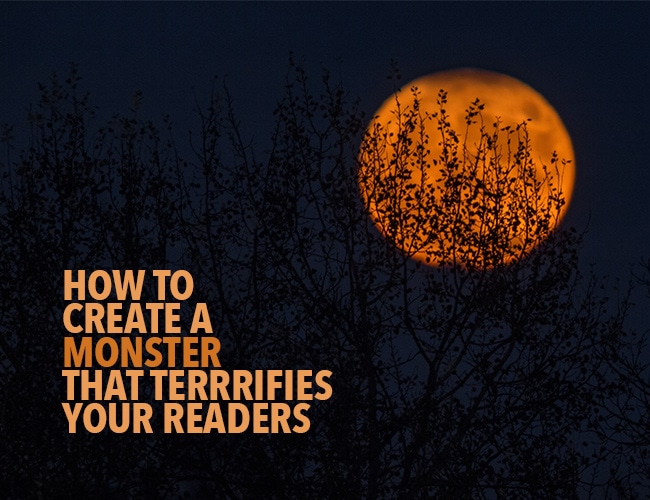
When writing monsters, you could rely on the tried-and-true vampires, zombies, and giant, man-killing spiders. There's nothing wrong with adding to the monster canon, but it does get a little boring after a while. It’s often better to create a monster all your own .
Decades have been spent honing the standard wants and abilities of vampires and zombies. How can you create a monster just as good in a much shorter time frame?
It's simple really: You put some thought into rounding out your monster's character.
Read on for my tips on making your monster come to life!
How to Create a Monster
Your monsters need to have substance. The same amount of thought should be given to them as your other characters. They are characters, after all. While it’s fun to have a nice slasher romp every so often — with creatures that don’t seem to do anything but maim and kill — the monsters that stick with you, the ones that truly scare , have some thought put into them.
Ready to create a monster ? First, you need to create a character profile for your monster, just as you would any other character. Here are some things to think about when developing a monster character profile:
What is it?
This is basic and you probably already nail this every time you write a monster. What’s it called? What does it look like? What does it sound, smell, and feel like? Can it talk or communicate with other monsters in some way? How about with humans?
Is it evil/bad/a killer? Does it hurt us, help us, or just sit on the sidelines as we ignore it? Remember not all monsters have to be scary. And even if they are scary, is it because we don't understand them? Are they trying to be nice, but have been driven to violence?
Where does it come from?
Background is important if your monster comes from away , wherever that may be. It helps keep you in mind of consistency and logic in your creation.
For instance, if your monster is bright red, why? Is its homeworld red and it blends in better that way? A monster that comes from a cold area would probably have a thick coat of fur. That wouldn’t be so convenient for something that lives in New York City’s sewers.
Think about the development of your monster; don’t just throw spikes on its back because that seems cool.
A note on logic: Your readers understand this monster isn’t real. It doesn’t need to logically fit into our world. It needs to logically fit into the world you have created . Suspended disbelief is a beautiful thing, but can be ruined by an illogical detail.
What does it eat?
This one may seem mundane, but it’s important for character development and logic.
I recently read an awesome book about a den of monsters who lived underground, had been unearthed, and had a penchant for killing humans but not eating them. They were intelligent. They had a society. They had motives. But their home environment was simply a cave, showing no signs of agriculture or prey.
What on earth did the things eat? It’s a question that’s plagued me ever since I put the book down.
Your monster may eat humans, but why? Is it starving and has no other choice? Does it just have a taste for humans?
And remember, killing isn’t eating. If your monster is simply killing humans and leaving the bodies uneaten, why? Where is it getting its nourishment?
It’s questions like these that get you thinking deeper about your monster and help you round out your character.
What are its strengths?
Its strengths should be many and should seem impossible to overcome. The thing that makes monsters scary to us is they’re unpredictable. We don’t know what we’re dealing with and don’t know how the monster is going to react. We simply don’t know what else it’s got up its sleeve. (Speaking of, does it have sleeves?!)
Think beyond strength and sharp teeth. Can it learn and adapt? Can it camouflage itself? Is it able to use any sort of supernatural power like telekinesis?
What are its weaknesses?
Technically, they only need to have one weakness: one your protagonist can exploit in order to defeat it . You can have more than one, but normally the monster is scarier and the tension is amped up more if there’s only one. It makes it seem that much harder for your protagonist to defeat it.
Sure, we've got the standard stake through the heart or beheading. But what about something more complicated? Try to come up with a non-traditional (i.e. not a bigger, badder weapon than the monster has) or unexpected weakness (bonus points for irony).
In Signs , the water defeated the aliens. In War of the Worlds , it's a run-of-the-mill pathogen. Medusa was defeated when Perseus got the bright idea to look at her through a reflection.
Of course, there's nothing wrong with a good, old-fashioned headshot to kill a zombie if you'd rather not be subtle or you're working within a word limit. It just might not be as interesting.
What do we know about it?
Ideally, your other characters and your readers know next to nothing about these monsters at the start. Slowly, your protagonist learns more about the creature and develops an often-risky plan to defeat it.
In horror (and a lot of science fiction and fantasy), your characters learn about the monster through the use of redshirts. Redshirts, simply put, are characters who only exist to get killed. They’re the first ones that die, and through their deaths, your protagonist learns a lot about the monster they’re facing.
They learn how it kills, how it hunts, how it moves. They learn its capabilities. And ultimately, they discover its weakness.
What does it want?
You monster must have a motivation. That motivation can be simple, like eating or breeding. (Think Alien or The Meg .)
But it can also be more complicated. Is it intelligent? Does it want to take over the world? Does it just want to protect its home environment, its family, or itself?
Is it forced to come out of hiding for some reason? Was it ever hiding, and why?
Is it just having a fun hunting party, like Predator ? Did humans do something to it first? (Poor Frankenstein's monster.)
All Monsters Welcome
I’ve mostly concentrated on making monsters that are scary, but they don’t have to be. Monsters, Inc. has plenty of lovable monsters. There's the Grinch and Jack Skellington and every fluffy thing on Sesame Street. Then there's Frankenstein's monster, who's really only mean if you're mean first.
Even if your monster is more cuddly than vicious, you still need to figure out motivations and background. (Pro tip: You should do this sort of thing for all your characters.)
It’s important to note that this list isn’t all-encompassing, nor is it necessary to answer every single one of these questions. This list is a jumping off point to get you thinking. Take what you want, leave what you want, and add what you want.
Just remember to give your monsters a motivation and keep them consistent and logically grounded in the world you have created.
Do you like to create a monster completely your own, or do you prefer to stick with the standards everyone knows? Let me know in the comments !
Today I want you to spend fifteen minutes writing a monster character profile. Try to get to as many of the questions listed above as you can. Make your monster as “real” as possible. Have fun with it!
Then share your character profile in the comments and give your fellow writers some feedback!

Sarah Gribble
Sarah Gribble is the author of dozens of short stories that explore uncomfortable situations, basic fears, and the general awe and fascination of the unknown. She just released Surviving Death , her first novel, and is currently working on her next book.
Follow her on Instagram or join her email list for free scares.
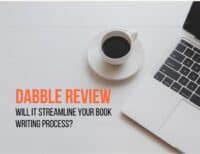
I Am working on a kaiju novel called Field of Clovers I may need help with my monster its when Tokyo is suddenly attacked by a monster with hostile intentions
Trackbacks/Pingbacks
- Author Inspiration and This Week’s Writing Links – Staci Troilo - […] Creating Monsters for Horror | The Write Practice […]
- Writing Links Round Up 11/19-11/24 – B. Shaun Smith - […] How to Create a Monster That Terrifies Your Readers […]
Submit a Comment Cancel reply
Your email address will not be published. Required fields are marked *
Submit Comment
Join over 450,000 readers who are saying YES to practice. You’ll also get a free copy of our eBook 14 Prompts :
Popular Resources
Book Writing Tips & Guides Creativity & Inspiration Tips Writing Prompts Grammar & Vocab Resources Best Book Writing Software ProWritingAid Review Writing Teacher Resources Publisher Rocket Review Scrivener Review Gifts for Writers
Books By Our Writers

You've got it! Just us where to send your guide.
Enter your email to get our free 10-step guide to becoming a writer.
You've got it! Just us where to send your book.
Enter your first name and email to get our free book, 14 Prompts.
Want to Get Published?
Enter your email to get our free interactive checklist to writing and publishing a book.
Des M. Astor
It would be a disaster to not give me a read!
Make your readers SCREAM! Describing the sounds of HORROR – Auditory description ideas

WARNING! THIS ARTICLE HAS HORROR CONTENT SUCH AS SCARY NOISES AND GORE!
One thing that’s particularly hard to capture in writing is sound. Visual stimuli is the easiest, in my personal opinion, as you can describe color, texture, and movement. The sense of touch seems a bit more straightforward as well. Sound, however, brings in a lot of needed comparison points, something I imagine would be the case for taste & smell too. You can’t really say something smells red/the menagerie of synonyms for red unless you’re describing a drug trip.
You need to keep your target audience in mind, and that’s something I’ll talk about below. By that, I mean location, and what sounds they’ve heard before. This could help when you are making comparisons. Some sounds might be universal, but that will generally be really hard to determine. Sure, most people know the sound of ocean waves, but those by the shoreline have a genuine understanding of the sound as opposed to those who have seen it on mediums not in person.
Horror movies have the benefit of music for building suspense and don’t need to describe those sounds–you can just hear it unless it’s in captions. That’s why it’ll be a fickle thing in horror writing, because a lot of the ‘easier’ methods in horror video media just isn’t there, especially for sound. I wanted to give my outlook and advice on sound in horror and dark fantasy for this article!
Animal Screams
Not everyone has heard the scream of a mountain lion, and sometimes it can be described as sounding ‘like a screaming woman’. I think it sounds like a very demonic meow. Taking the different footpath for description in this case may be the best way to go. If you want to stray from generic, saying: “The scream was like that of a high-pitched, demonic ‘meow’.” That’s a bit more on the nose, given these are large cats, but it seems more accurate to me this way.
Then, of course, if your audience is in an area where they’ve heard mountain lions or was likely exposed via media like this, you could use this as a base sound. “The monster’s scream was nearly identical to that of a mountain lion”. Some folks may need to look up what a mountain lion sounds like, but you can’t avoid that with every reader, so I would say not to refrain from doing so just because that may be a factor!
Warning: This gets significantly louder after the initial trills the foxes make. So, what does the fox say? Well, a variety of noises that can be either cute or absolutely terrifying. If you use the term in your writing, “Screams like that of a fox”, though, your reader might be confused. I don’t think it’s super well known that foxes can do this, especially to those in the city. The mountain lion’s ‘scream’ is more commonly known, I think.
To describe this, I would say something like ‘a few high pitched, eerie trills followed by all out animalistic screaming encompassing all of the agony in the world. Extremely foxlike, probably an actual fox.’ It depends on if your creature is a fox in this case or an entity that just sounds like one, of course. This way, you’re elaborating on what the fox sounds like, and helping the reader to learn this little neat tidbit as well.
The fox is fine here, of course, and from what I can tell in no sort of agony. They just stopped and decided to scream for one reason or another. Sometimes things work out that way, I suppose.
I’ve always considered the Tasmanian Devil to have an iconic sound. Granted, not everyone knows what they sound like, but damn is this snarling monstrous. This would go perfectly with a variety of monsters. I actually describe this noise in my book, Red Viper , for Darcia, my Tasmanian Devil shapeshifter. Often I will use ‘screams like nails ripping down a chalkboard’ or something because this screeching is so grating and attention-grabbing.
“Warbled, demonic snarling” also could be a great descriptor for this. So to put it all together: “Warbled, demonic snarling like that of a Tasmanian Devil” if you’re describing a monster who is using this noise.
Sharing a few animal noises here, I feel, is helpful for some folks to get an understanding of how they can shape organic monster noises. Hopefully this helped! There’s so many out there, like the rumble of a crocodile or screech of a barn owl that can be used too. Good practice could be exploring the variety of eerie animal noises to toss onto your monsters.
What happens if you combine a few of them, too? Something no doubt terrifying, I bet.
Creepy Mechanical Noises
This particularly eerie noise has featured a few times in creepy compilations I watch on youtube. Why wouldn’t it? On a foggy day such as this, hearing a broken tornado siren probably put so many people on edge. I know in movies like Silent Hill, the siren was used for some strong tension. Sirens come in times of peril in every instance, and are used a lot to a potent degree in horror.
Something like this could be described as “The broken, repeating shriek of a siren, rising and falling in tone unnaturally as if warning of some never-ending doom”. Keep in mind to also find and describe EMS in your book if you’re utilizing world-changing events. I sort of regret not utilizing the EMS in my book when the world-changing event occurred, but you can’t win everything! It probably happened. I just failed to describe it. Oops!
A classic horror noise is the chainsaw, bringing to mind movies such as Texas Chainsaw Massacre and what have you. The “Gritting, whirring scream” of a chainsaw can strike fear into almost anyone given being chased by someone wielding a chainsaw can lead to an extremely gory, painful death. I feel like mechanical noises in general would have the word ‘whirring’ tacked onto them a lot.
Describing the startup of the chainsaw prior to the climax of when the machine is actually on can describe too. Something like: “The tug rendered a growl from the machine, but that didn’t do it… another, then another, my fate was to be sealed soon, but when? Upon the continuous roar, I knew I needed to run faster.”
I used to think ‘getting your teeth drilled’ was by something like this and was terrified. Luckily that misconception of mine was destroyed when I ended up getting them done in real life, which honestly was nothing compared to the horror show I had in my mind. There’s something about drills that are terrifying. You can use them to drill holes into flesh and possibly bone, depending on the strength. As a horror tool, I feel it’s effective.
“Whirring” and “Screeching” come in well here again, like the chainsaw. Though I don’t think “roar of a drill” works so much as “screech of a drill”.
Mechanical noises in general can really cause some people’s hearts to clench, so for modern horror, these work very well. We’ve been exposed to a variety of noises in this modern era, after all.
I leave you with this scary train noise… that I recorded myself! Yes, I joke about there being a haunted train in my living area. I’ll try to get a better sound if I take a walk while the train goes by, perhaps for a future article.
ARTICLE EDIT:
I see people stop in to this one sometimes, so I wanted to post a somewhat better piece of sound. I took a new video a while ago and never got to posting it, but here it is. I kept the old one on there cause I dunno. People may like it. But, this is the better version, you can hear the ‘haunted train’ more clearly.
Human/Monster Noises
Alright so this distorted, weird sound is a perfect example of just how sound can be used to be extremely creepy in horror and hard to describe. Something tells me: “Grating, moan-like grunting” isn’t as effective as listening to the sound here. Adding in terms like “unnatural” and “distorted” though will help your case in a horror situation, as well as “Growing louder and louder”.
Human moans, screams, and groans tend to blend well in both horror and erotica. What? It’s true–all about context in this case, to be honest.
This is a better example of a tortured moan of some sort. (Also the music in the video is creepy as hell but we’re not going to talk about that now.) I also discussed this horror piece in my article Nightmares On Christmas: 5 (Mostly) Underrated Horror Pieces you should check out as a horror fan! because it’s just too good. Anyway, this is an example of possibly a “morphed, wordless wailing and cries that imply the person would be better off dead long before those sounds were uttered”. I think capturing the emotion in this sort of piece is really effective.
How warped or tortured is your humanoid? Is there gurgling, liquid like blood or mucous in their lungs/throat? Think of how our voices can be warped and edged with agony.
Infants crying can be really creepy if used right. We often see them used as bait in horror or actual horror monsters like in this case. (Even though this is a fetus, not an infant, but you get it, same concept.) What’s so scary about the cries of babies? Well, humans tend to be vulnerable because generally we’ll check to see what’s wrong if it’s in some unusual area. Or maybe not check, but truly consider why there is a child crying in the middle of nowhere.
“There was a demonic undertone to the monster’s cries, which mimicked that of an infant as it dragged itself ever closer in a sloshing of loose flesh.” That’s what I came up with for this one. Of course, like in the last case, you could lace it with emotion, be it cries of sheer anger or curiosity. Either way, it’s going to be creepy.
Describing horror can be a difficult thing, but if done right, very effective. Even if my describing of things in this article didn’t help, I hope I shared a few sounds here I enjoyed for horror that sparked ideas. I think a good way to come up with noises for horror is to do a little bit of research on that end, then trying to figure out different ways to describe it. Truly, there is no right way to do this. You could strike fear in one reader and get ‘meh’ from another. Horror is a fickle beast, but it’s a fun one nonetheless.
To also elaborate on what I said in the beginning of the article, your target audience is important. If you’re going broad, you might want to be less specific. Targeting a specific area or location in your works will allow for more exact sounds to be described.
As for me, I’ve always found describing the looks of something much more easy, but I think that’s the case for most people.
Looking for a twist on Norse Mythology, vampires, & werewolves? Check out my urban fantasy novel Claws of Midgard here !
Share this:
Published by des m. astor.
Heya, I'm an author. Typically I write Urban Fantasy, and I only usually read in that genre as well. My author's website is both a writing blog and a showcase for my work. Check it out if you'd like. View more posts
Leave a comment Cancel reply

- Already have a WordPress.com account? Log in now.
- Subscribe Subscribed
- Copy shortlink
- Report this content
- View post in Reader
- Manage subscriptions
- Collapse this bar
- Translators
- Graphic Designers
Please enter the email address you used for your account. Your sign in information will be sent to your email address after it has been verified.
Embodiment of Horror: How To Write a Monster Story

Have you felt something drawing you to the dark side of literature? Do you see stories in the shadows that keep you company when you wake in the dark at night? If so, then you might be ready to embark on the journey of writing your own monster story. Don't be frightened of the work that lies ahead of you; there are endless opportunities to stitch together your own unique, terrifying monster that will both delight and intrigue your readers.
It can be easy to categorize anything scary or fear-inducing as a monster, but not every fictional creature can be classified as a horror monster. Let's define monster horror and consider the parameters for a creature to be considered a horror monster.
Monster horror definition
Monsters can be found within several horror subgenres, including:
Body horror
Extreme horror, lovecraftian, science horror.
What do monsters from all of these subgenres have in common? Horror monsters are characterized by their strange or grotesque appearances, signifying them as "the other" and something to be feared. These plots are typically centered around the protagonist's efforts to defeat or escape from these dangerous creatures whose purpose centers around creating chaos and danger. Fear of the unknown and the perversion of the mundane are common themes throughout monster horror stories.
Making a horror monster
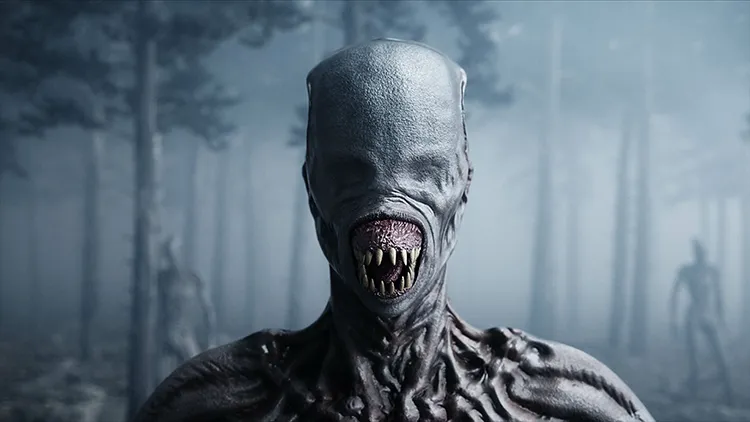
If you think writing a good monster horror is a walk in the park, you've got it wrong. Writing cheesy and cliché monster horror can be easy, but if you want your monster to stand out from the existing pool of creatures, then you're going to need to take on a unique perspective. Here are three main factors that define a horror monster:
- Strange or grotesque appearance : We're often afraid of the unknown or the unfamiliar. This includes physical features we are not accustomed to seeing, especially if they suggest some kind of mutation or potential danger. For example, a rotting face, such as you would see on a zombie, would cause revulsion and discomfort, making us fearful of interacting with the creature.
- Dangerous : If a monster is not dangerous, then there's no real, rational reason to be afraid of it. If it's not going to cause us harm, then we can simply avoid it and move on. A true horror monster needs to act as a threat against us.
- Part of a horror narrative : If the monster is not written into a horror narrative, then it does not count as a horror monster. Take Sesame Street for example. Oscar the Grouch or The Count are monster-like creatures, particularly the vampire, but they don't exist as horror monsters. They are playful characters meant to educate the youth. So, although The Count is a vampire, he does not count as a horror monster.
Although these are the three main components in creating a horror monster, these are not the only things you want to include in your writing. Here are some other necessities to keep in mind as you develop a good horror monster:
- Motive : Motive is possibly the most important thing to consider as you write your monster. Maybe your monster is a killing machine, ripping apart their victims limb by limb (yikes, am I right?). Or maybe your monster hunts their human prey under the cover of night, feasting on their flesh (gross). But why? Why is your monster feeding on humans? Is it because they have no other food resources and are desperate for survival? Why is your monster ripping apart humans? Are they trying to protect their environments from human trespassers? Treat your monster as a character in your story, because they are. This means giving them motivations just as you would for any other character in your story.
- Strengths : What are your monster's strengths? Are they extremely strong with multiple limbs that allow them to multitask in their pursuit to kill a human? Are they like chameleons, able to camouflage themselves into their environments, so they can hide from their prey and perform a successful sneak attack? Does your monster have supernatural abilities beyond the scope of human understanding? Even more interesting, is your monster intelligent? We're so used to reading monsters as these strong beings that use their bodies to inflict fear and pain. Consider making your monster smart. Although your monster may appear unthreatening, it could possibly become the most powerful monster ever if it adheres to human logic.
- Weaknesses : Even though your monster is the ultimate villain for your hero to defeat, your hero is going to repeatedly fail. In fact, your protagonist(s) may endure pain and suffering at the hands of your monster before it is defeated. So, how does the protagonist defeat the monster if it's so strong? Every single monster has one (or a few) major weakness. Consider the werewolf. What kills a werewolf? A silver bullet. What defeats a vampire? Holy water, a wooden stake, or sunlight. It may take time and trial and error, but your protagonist will eventually discover your monster's one weakness they can exploit to triumph over the monster in the end. Make sure you keep this weakness hidden until you approach the end of your story.
- Unpredictability : If your characters and readers know everything there is to know about your monster, then there's very little point in writing a monster horror story. Part of the fear comes from the unpredictability of the monster. Can the monster be exposed to sunlight, or are they allergic to it like vampires? Can your monster camouflage themselves to hide from your protagonist? We shouldn't know what your monsters can and cannot do for the majority of your story. This way we'll be left on the edge of our seats. A twist on this unpredictability trope is to make the mundane unpredictable or to pervert the mundane. This goes beyond your monster character and can include environments and inanimate objects. We're used to the dark being scary, but what if you make the light frightening? Cell phones are normal devices that almost everyone uses, but some people get frightened or wary when their phones start listening to them. Play up on these fears and make the non-scary, scary.
- Make the monster symbolic : What's scarier than a man-eating monster or being buried alive? Realizing that the thing you've been afraid of all along exists in reality. In fact, you may already be a victim to it. Perhaps your monster is never satiated and that's why its constantly killing humans and feasting on them. This can symbolize greed and society's ever-increasing need for more . If your monster represents a larger theme from the real world, it might be even scarier than if it were just a simple scare because it makes readers question their own ideas and livelihoods.
- Enclosed spaces
Of course, there are plenty of other phobias for you to use in your writing. Do some research and find one that fits your story.
Now that you know what defines a horror monster, let's examine the nine most popular horror subgenres that include monsters. These are sure to keep you and your readers awake at night.
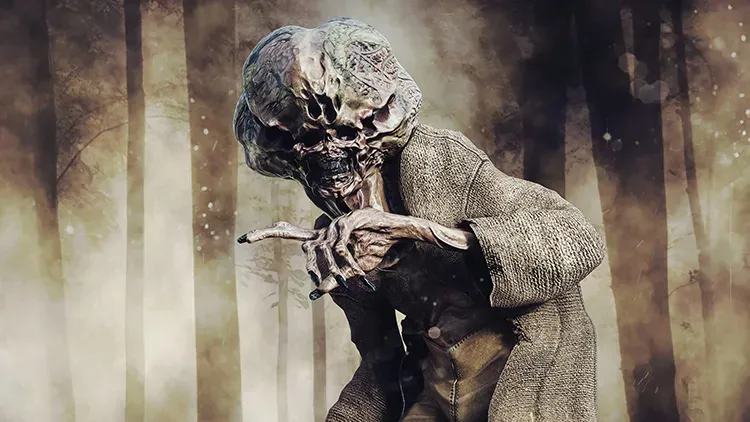
The body horror subgenre is characterized by the grotesque and disfigured appearance of the monster(s) in the story. Popular sources of disfigurement are diseases, mutations, and scientific experimentation. The terror in these stories comes from the thought of your body betraying you, causing you to lose any sense of agency. The most recognizable figure in body horror is the zombie with its rotting flesh. Here are some components of successful body horror:
- Evoke intense emotional reactions : As opposed to other subgenres of monster horror that seek to scare readers with violence, body horror is frightening because it is gross and disturbing. It evokes feelings like paranoia, disgust, and anxiety.
- Perversion of the mundane : The main reason why body horror is so anxiety-inducing is because it perverts the mundane. Mutated faces and bodies make us turn our faces away in fear. We fear what we don't know, and this fear becomes multiplied when it applies to the human body, something that everyone relies on to survive.
- Invasive : Body horror is, by nature, invasive. This may mean a pest or disease has invaded your body and caused your body to mutate. For example, one trope in these stories is a woman being impregnated by a horrifying host. The lack of control over your own body is what makes body horror so horrifying.
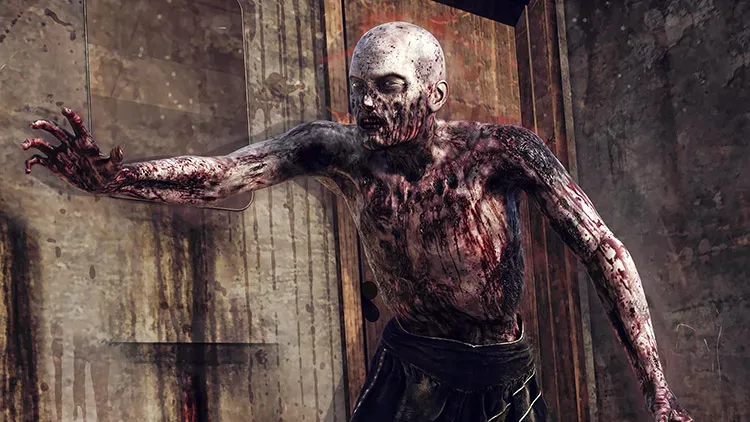
Extreme horror is characterized by its lack of limitations. These stories will showcase extremely graphic and horrifying acts of violence. The terror comes from knowing, in detail, exactly what is happening between the monster and the protagonist(s). There is particularly a lot of blood and gore. For example, Jason Voorhees from Friday the 13th is a serial killer who brutally murders camp counselors. Saw is also considered to be an example of extreme horror. Here are a couple common tropes found in extreme horror:
- Sexual violence, abuse, torture : This subgenre is not for the weak of heart. These are pretty self-explanatory, but they will be graphically depicted in extreme horror stories.
- Emotional consequences : Because of the sensitive and oftentimes triggering content found in extreme horror, readers will have very emotional reactions. The plot will examine the emotional consequences of horrifying acts of violence and make the readers consider emotional trauma.
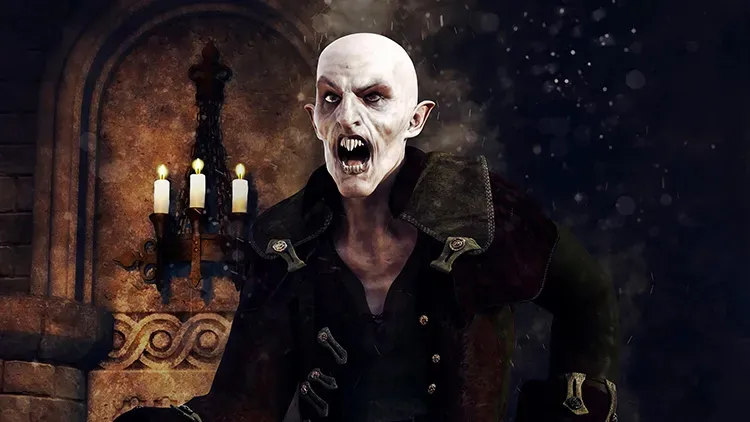
Gothic horror is most commonly associated with the classic setting of the sprawling, old-fashioned manor with a vampire hiding in its depths (hey, Dracula !) Much of the terror in these stories comes from developing a mysterious atmosphere full of dark, long-forgotten secrets, madness, and quiet hauntings. Many gothic horror stories are allegories for psychological themes or the fall of the aristocracy.
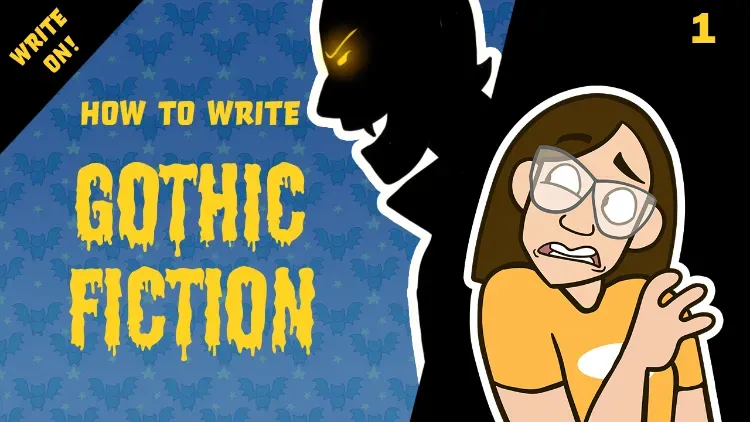
Here are some of the most important factors to consider as you write gothic horror:
- Establish rules : You should set up rules for your antagonist. They should not be entirely separate from human understanding. Instead, these characters should have moral beliefs surrounding who they are and what they do, so the protagonist can seek out tangible ways to attain knowledge and understanding and to understand the antagonists' purpose.
- Setting : Gothic horror is known for its settings, particularly the sprawling horror castle or the mansion full of secrets (we'll get to secrets in a moment). This is because using small settings allows you to isolate the horror, making your characters and readers feel more claustrophobic. Treat your setting like a distinct character, because it is. You can use literary devices to bring your setting to life. Some of the best ones to include in your gothic horror are metaphors, imagery, foreshadowing, allegory, and personification.
- Secrets and mystery : Leaving your characters (and readers) in the dark about certain settings and secondary characters will enhance the horror in your story. Think about using those literary devices we mentioned to build a sense of mystery and suspense in your horror story. However, be sure to provide answers to your readers' questions by the end of the story. The horror is meant to eventually be understood.
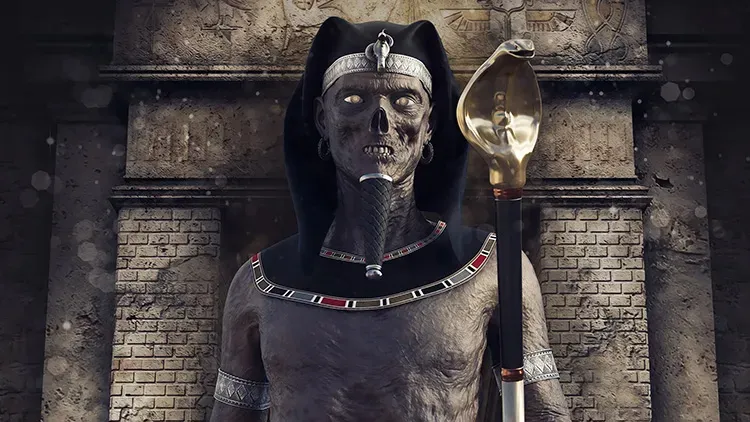
Historical horror stories can use settings and events from an already dark period of time from the past, such as the Donner Party , and make it even more horrifying by juxtaposing real historical figures with monsters and new characters. The protagonist usually gives a first-hand account of what actually happened during that event, according to their perspective. These stories can also take inspiration from any time period, such as 536 AD , and use it as a backdrop for a horrifying tale. Consider how many books and films have been written in historic Egypt with the mummy as the main horror monster.
- Accurate language and voice : We know you want to focus on the intricacies of the plot for your historical horror story, but part of that story is the historical aspect. If your story is set during WWII, your characters aren't going to be up-to-date with current slang and terminology. They also won't be aware of modern discoveries or technologies that did not exist during that time period.
- Pervert the history : If you're writing during a specific historical time period, such as ancient Egypt, take something already creepy from that time period and make it terrifying. For example, ancient Egypt is known for its mummies. Mummification was a popular and normal practice, yet many writers turned mummies into monsters by making them come to life and terrorize the living. This practice can also be applied to specific historical events.
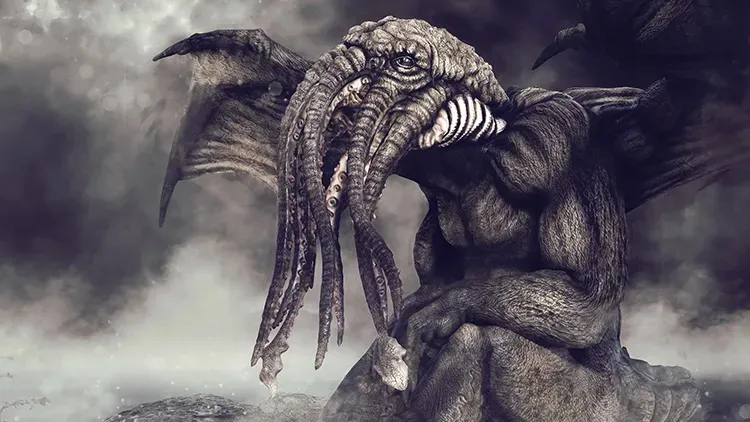
Also known as cosmic horror , these stories feature Lovecraftian god-like monsters that exist beyond our reality and comprehension and have little to no regard for human existence. Human beings are insignificant creatures in the face of the larger universe. The protagonists' insatiable curiosity of the secrets of the forbidden cosmic knowledge is essential for these stories and results in the horrific realization that such knowledge is beyond their human-constrained capabilities. They are left with little to no answers, and any answers they do receive are tainted by the bleakness depicted through these monsters.
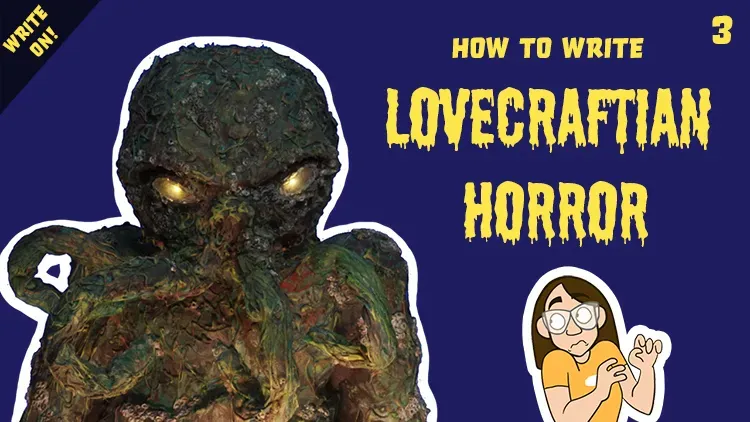
- Setting : You should take mundane settings, depicted as decrepit, poor, and bleak (gee, we wonder why!) and introduce entities that are capable of breaking them. Doing this will make both your characters and your reader uneasy because they are aware there is something lurking beyond the mundane, but they are unknowing.
- Unreliable narrator : Since most Lovecraftian stories are told after the discovery of a cosmic horror, the the unreliable narrator relies on fleeting images and moments of their encounters, making them unreliable. These protagonists are also faced with insanity or death because their curiosity drags them in over their head and their lack of agency leaves them helpless and lost amongst a cosmic horror.
- Make everything horrifying : Drawing on Lovecraft's fear of well, lots of things, you should make the mundane scary. Suddenly, the water bottle you've been carrying around and drinking out of is looking suspicious. Practicing this method will add unease to your narrative.
- The ending : Cosmic horrors should not wrap up neatly. The genre is about asking questions and receiving answers which are partial, dangerous, impossible, or create more questions or any combination of those.
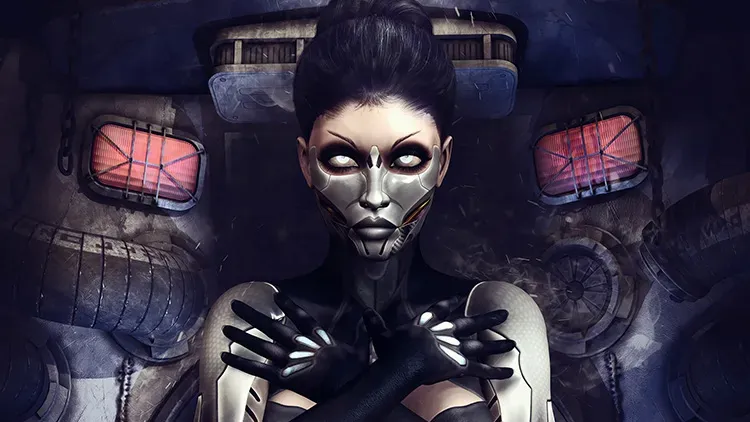
Man-made horror stories feature man-made monsters (the proof is in the pudding!). This monster horror subgenre veers away from supernatural creatures and plots. Instead, these stories tend to explore the limitations of human curiosity and ability, making us question our own selfishness and humanity in the face of progress. One of the most popular examples of this subgenre is Mary Shelley's cautionary tale Frankenstein , a book that helped introduce the mad scientist trope. However, these stories do not have to include this trope and can include hazards like pollution, disease, or genetic mutation.
- Curiosity : Your protagonists should be driven by their curiosity for knowledge. This knowledge should seem dangerous and unattainable, but your protagonist refuses to give up on their pursuit of it. They can't have it, but they want it anyways.
- Unintended consequences : Since your protagonist wants to uncover seemingly unattainable knowledge, they may go to great lengths to do this, including performing dangerous experiments such as raising the dead (hey, Frankenstein !) This leads to unintended, often harmful, consequences for all parties involved.
- Theme of humanity : Man-made horror stories present the fear of human nature and our capabilities. We are selfish creatures who crave knowledge but cower in the face of consequences. We do not like to see the humanity in the monster because then we would have to recognize our own flaws.
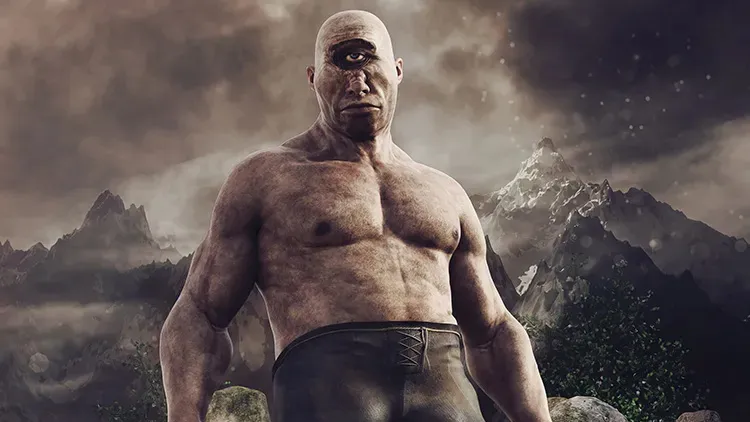
Mythic horror stories feature gods, goddesses, and other popular figures and settings from Greek and Norse mythology, folklore, or legends. Mythic horror seeks to emphasize the more terrifying and disturbing aspects of myths, using well-known stories and figures (such as Medusa ) to create different, more terrifying tales with additional layers.
- Alter a pre-existing story : Mythic horror is one of the more straightforward monster horror subgenres. There are plenty of horrifying mythic creatures that already exist, so you have lots of potential. Your goal is to change the original narrative of the mythic story to make it more horrifying.
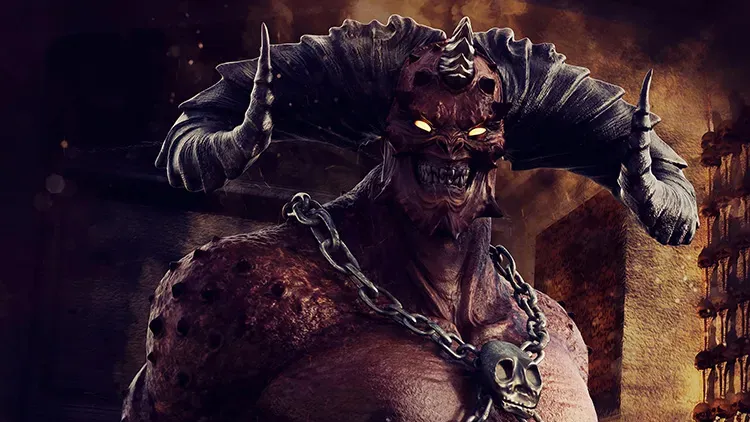
The occult horror subgenre is most commonly associated with witchcraft, but it is not limited to this practice. These stories incorporate an exploration of non-conventional religions that are typically associated with dark practices and demonic energy. As such, the protagonist, sometimes a witch or human looking to experiment, should end up entangled in dark magic, curses, and the occasional undead or demon summoning (fun!).
- Protagonist : Choosing your protagonist will greatly impact the plot of your story. An occult story about a witch will be much different than an occult story about a religious dissenter. Your protagonist should be someone with some kind of magical ability or the desire to break away from the norm. The irrational becomes rational, for your protagonist.
- Enforcing and breaking rules : Speaking of breaking away from the norm, your story should have set rules. If you're writing a story about a witch, make sure there are limitations to her power. Part of the horror in these stories is the protagonist's desire to break the rules and the consequences that result from this disobedience.
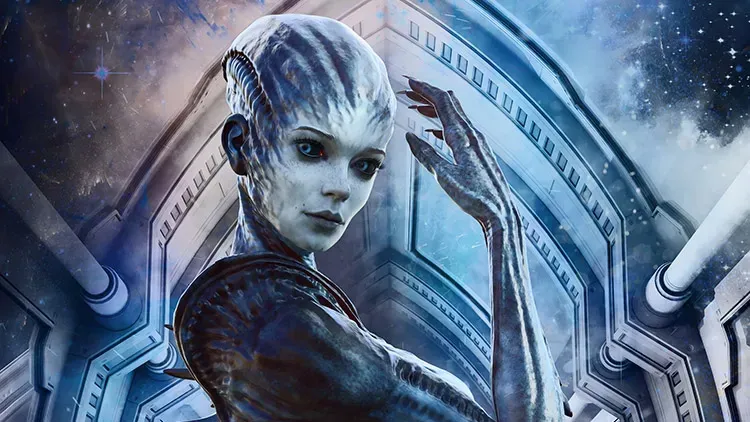
The science horror subgenre combines elements of science fiction and horror. Much of the science in these horror stories comes from medical research and experimentation in the name of progress. This is not to be confused with man-made horror. Although there are similarities between the two monster horror subgenres, not all man-made horror is also science horror and vice versa. For example, Frankenstein is a man-made monster, but the story is not science horror. Likewise, alien monsters are not man-made monsters, but they are science horror monsters because aliens exist in the sci-fi realm.
- Realistic fears : Successful science horror incorporates real fears and anxieties we have regarding things like technological advances, scientific research, and other life. Many of us have imagined about a future in which we lose control of our technical accomplishments as they turn against us. So, when these fears are realized, it resonates better with the audience, making it a truly frightful horror story. The same can be said for our fear of aliens from outer space and the possibility of being invaded by another species.
- Suspense : Suspense is a key feature to science horror. Your characters and readers' anxiety builds as they realize that the things they're familiar with are capable of creating dangerous consequences for mankind or that their mundane world is not so normal, after all.
Monster madness
We know we've just thrown a lot of material at you. You may be scratching your head, wondering if a vampire or demon would be a better fit for your story. Don't worry! You have plenty of material to work with, and you can even try experimenting with mixing monsters. Don't be afraid to embrace the monster madness!
Header photo by plus69 .
- Book Writing Advice
- All Blog Posts
- Writing Advice
- Academic Writing Advice
- Admissions Writing Advice
- Short Story Advice
- Employment Writing Advice
- Business Writing Advice
- Web Content Advice
- Article Writing Advice
- Magazine Writing Advice
- Grammar Advice
- Dialect Advice
- Editing Advice
- Freelance Advice
- Legal Writing Advice
- Poetry Advice
- Graphic Design Advice
- Logo Design Advice
- Translation Advice
- Blog Reviews
- Short Story Award Winners
- Scholarship Winners
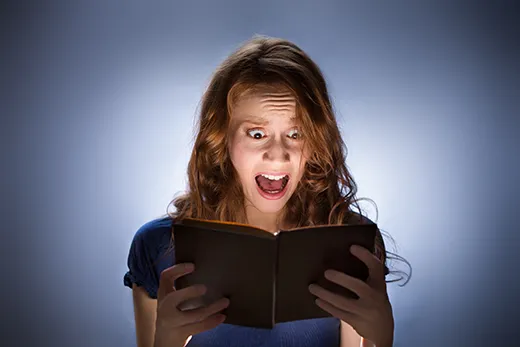
Let our editors dissect your horror writing
How to Terrify your readers with a well written Monster!
How to terrify your readers with a well-written monster….
With Halloween on the horizon, now is the perfect time to turn our attention to our notepads and keyboards and use our spooky festivities as inspiration for our writing.
Monsters have been an integral part of the horror genre for decades, but creating a truly scary monster that will keep your readers on the edges of their seats is not an easy task.
This article will give you practical writing advice on how to achieve a truly horrifying monster in your writing.
The first thing you need to consider when creating your monster is its functionality.
How does it function within the text? To figure this out, this requires you to make a monster character profile detailing the monster’s key characteristics. You need to consider what actually is your monster. Try to add as much detail as possible to your character profile; you need to be able to give details about what your monster is, what it looks like, sounds like, smells like, and where it comes from.
Your monster doesn’t need to fit logically into the real world, but it needs to be able to function within the fictional world you have created. This means that your character profile needs to add up – if your monster has thick fur does it make sense that it exists within the hot climate of your fictional world? Let’s look at Mary Shelley’s description of Victor Frankenstein’s monster in her famous horror novel Frankenstein :
“His limbs were in proportion, and I had selected his features as beautiful. Beautiful! Great God! His yellow skin scarcely covered the work of muscles and arteries beneath; his hair was of a lustrous black, and flowing; his teeth of a pearly whiteness; but these luxuriances only formed a more horrid contrast with his watery eyes, that seemed almost of the same colour as the dun-white sockets in which they were set, his shrivelled complexion and straight black lips.”
In this passage, Mary Shelley provides readers with a very clear description of what Frankenstein’s monster looks like; we know what colour his skin is, what his eyes, hair and teeth look like and not only this, but the description is totally plausible within Mary Shelley’s fictional world. This is an effective way to create a scary monster, but it can only be achieved through meticulous character planning.
Another way to effectively scare your audience is by tapping into what people fear.
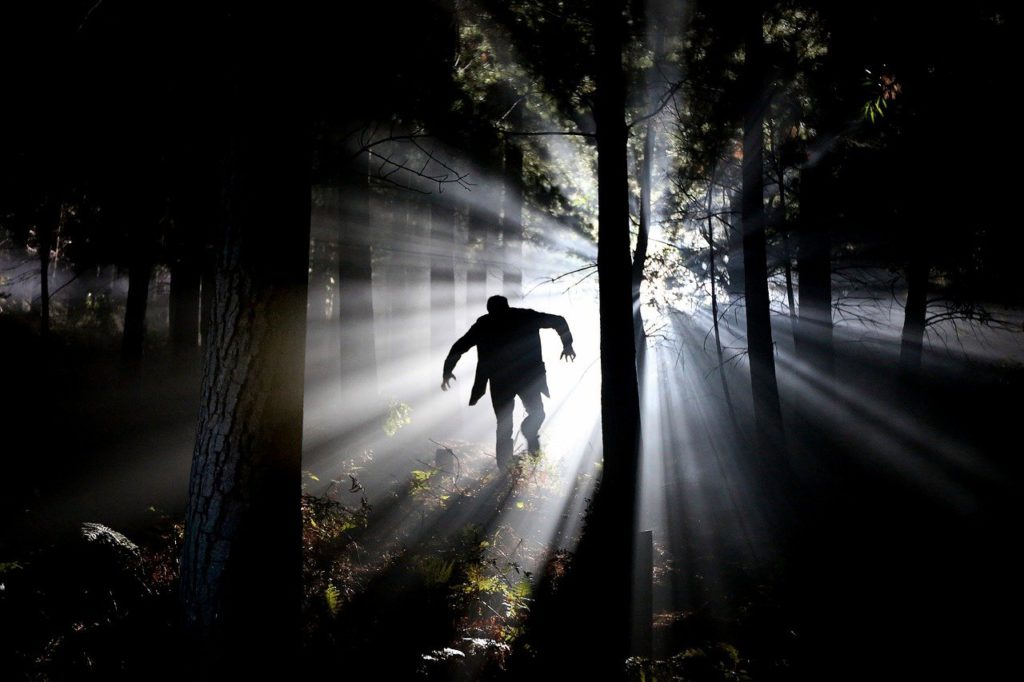
But using phobias is not enough in order to create an effective monster. You need to combine a common phobia with a typical character trait of monsters; their gruesome capacity for violence. Not only are monsters your biggest fear, but they are capable of destroying you in a particularly graphic and disturbing way.
Let’s look at how Stephen King, a legend of the horror genre, crafts his monster in his short story The Little Green God of Agony:
“Melissa had seen where the thing came from and even in her panic was wise enough to cover her own mouth with both hands. The thing skittered up her neck, over her cheek, and squatted on her left eye. The wind screamed and Melissa screamed with it. It was the cry of a woman drowning in the kind of pain the charts in the hospitals can never describe.”
This short segment shows how Stephen King has combined a common fear of insects with a particularly gruesome violent act. Monsters don’t have to be big, scary beasts that hide under your bed, they can be something as simple as an insect as long as they tap into a commonly experienced phobia. To practice this technique of monster creation, think about what your biggest fear is. Write it down and try to create a character profile in 5 minutes that uses your own phobias or fears however common or uncommon they may be. If your character is able to scare you, then it might just be a monster worth writing a book about!
Another key element that makes truly terrifying monsters is the unknown.
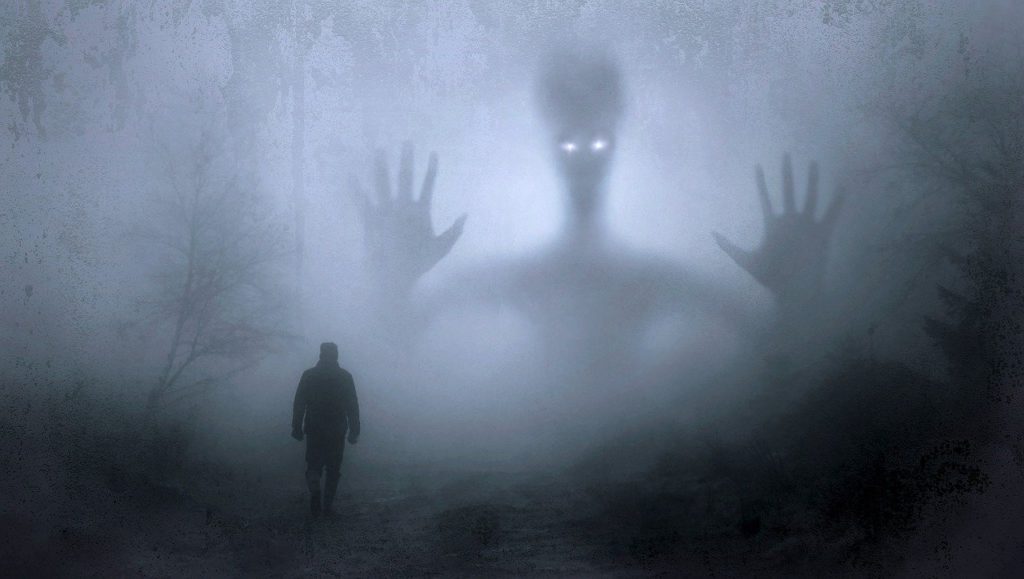
This technique not only creates suspense but enables us to add depth and character development as the monster might not be as monstrous as it is first made out to be. The perfect example of this is in Beauty and the Beast; at first the Beast is depicted as monstrous and dangerous but as the story develops we see his softer side and the true villain is revealed to be Gaston and not the Beast at all. To hone this technique, treat your monster the same way as you would your people characters; people are multi-faceted with multiple dimensions to their character, so this applies to monsters too.
If you enjoyed this article and are still looking for your horror fix, check out these articles such as The Redemption of the Monster and How to Write a Ghost Story in Jamesian Style also by The Writer’s Initiative.
Share This Story, Choose Your Platform!
Related posts.
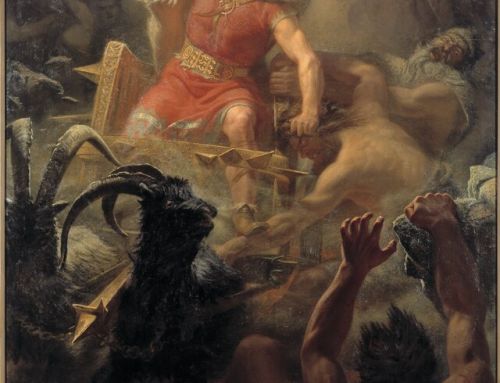
A Concise History of Nordic Mythology

Open Readings at the Barbican – Booked out! – 25 Attendees Signed Up

January Open Readings – Barbican Library – 17 Attendees Signed up so far!
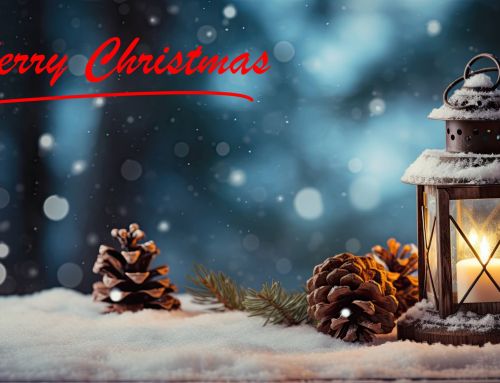
An Audio Selection of Christmas Ghost Stories
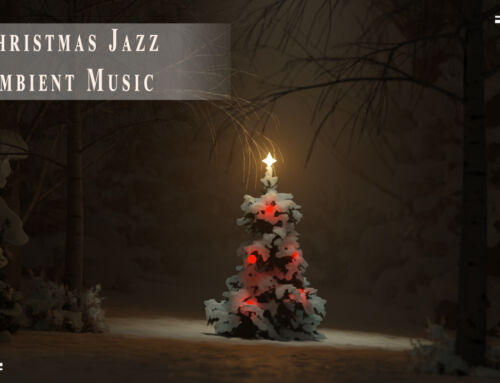
Christmas Jazz – Ambient Background Music
One comment.
[…] How to terrify your readers with a well-written monster: How to Terrify your readers with a well-written Monster! […]
Leave A Comment Cancel reply
Save my name, email, and website in this browser for the next time I comment.
Privacy Overview
7 Ways To Write A Damn Good Fight Scene
Fight scenes are the single hardest character interaction to write. Many authors who know their craft in every other respect can’t write a fight scene to save their (or their hero’s) life. But don’t despair. There are a few strategies you can use to ensure you write the kind of fight scene that grips a reader from start to finish. Let’s take a look at seven of them…
1. Detail is a dirty word
I stepped back, balancing my weight on my left foot, and threw my right fist out in a curved punch at his temple. Turning ninety degrees to the side, he brought his right forearm up to counter the blow, formed a fist with his left, and threw it at my outstretched jaw. I was in trouble.
This might be exactly what you imagine happening, but the excessive stage direction stretches the moment out, turning a frenzied series of blows into a dissection of body language and intent. This fight feels slow, and that feeling is paramount – if your reader is instinctively bored by a fight, you can’t convince them it was exciting by describing more of it.
2. Pace is everything
The cliffs were very close behind him now. Inigo continued to retreat; the man in black continued advancing. Then Inigo countered with the Thibault. And the man in black blocked it.
Each sentence is short, the written equivalent of a sudden move. Every time a new person takes an action in this passage, Goldman starts a new line, making the reader encounter each attack as a sudden, vital event.
3. Perspective defines experience
Instead of looking who had pushed him, Fletch tried to save himself from falling. The edge of the parade route’s pavement shot out from under him. Someone pushed him again. He fell to the right, into the parade. A foot came up from the pavement and kicked him in the face.
The writing, and thus the reader’s experience of events, conforms to Fletch’s experience: the attempt to right himself interrupted by sudden acts of violence. You can also write to match the perspective of the attacker: there’s something especially brutal about a villain methodically taking an opponent apart.
The opposite can also be true
4. verbs not adverbs (and avoid passive voice), why the passive voice won’t work, 5. sensory information is relatable.
He pulled him to his feet, almost tearing the collar… He heard the slight rasp of material ripping.
6. Make the result clear
I asked Tyler what he wanted me to do. Tyler said, “I want you to hit me as hard as you can.”
Two screens into my demo to Microsoft, I taste blood… My boss doesn’t know the material, but he won’t let me run the demo with a black eye and half my face swollen from the stitches in my cheek.
7. Context is key
Your fight scene as an action scene, fight for your write, bronwyn hemus, 79 thoughts on “7 ways to write a damn good fight scene”.
Leave a Comment Cancel Reply
Walking by the Way
the road to inspired learning
Monster Creative Writing Prompts
September 22, 2021 by ami Leave a Comment
Do you need a fresh creative writing activity for your students?
Motivate your students to think and write creatively with these monster creative writing prompts .
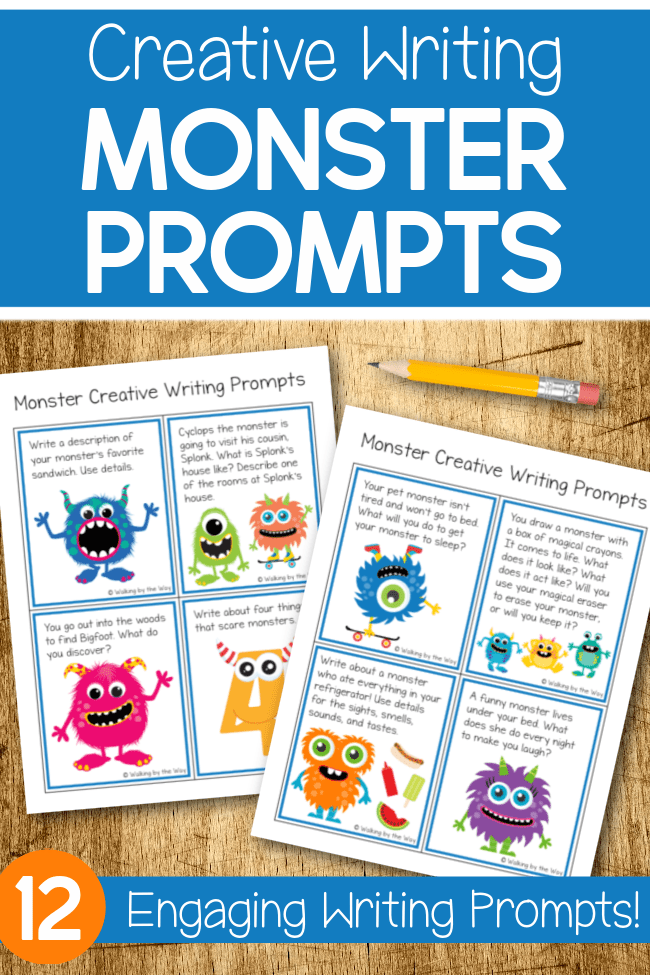
The monster writing prompt cards include these twelve imagination-boosting writing prompts:
- You visited a castle and found a monster in the dungeon. Record your conversation with the monster.
- You need to disguise your pet monster as a human. What will you use for its costume? Remember, you need to cover it from head to toe. How will you hide its smell?
- One of your monster’s yellow fangs is infected and your monster needs to visit the dentist. Write about what happens at the dentist.
- If you meet a monster, what are three rules you should follow?
- Write a description for your monster’s favorite sandwich. Use details.
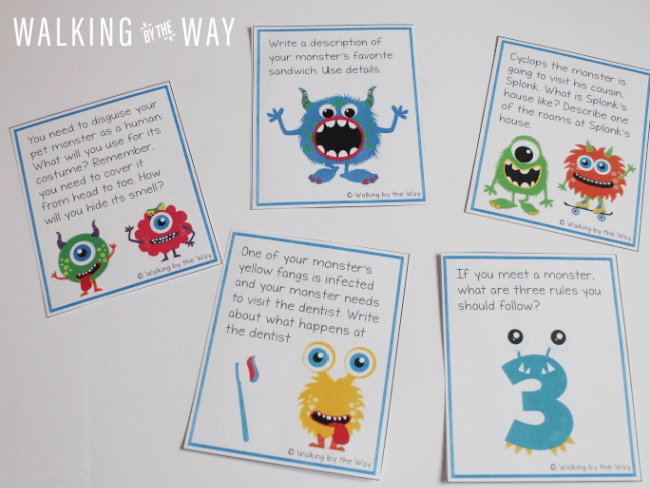
- Cyclops the monster is going to visit his cousin, Splonk. What is Splonk’s house like? Describe one of the rooms at Splonk’s house.
- You go out into the woods to find Bigfoot. What do you discover?
- Write about four things that scare monsters.
- Your pet monster isn’t tired and won’t go to bed. What will you do to get your monster to sleep?
- You draw a monster with a box of magical crayons. It comes to life. What does it look like? What does it act like? Will you use your magical eraser to erase your monster, or will you keep it?
- Write about a monster who ate everything in your refrigerator! Use details for the sights, smells, sounds, and tastes.
- A funny monster lives under your bed. What does she do every night to make you laugh?
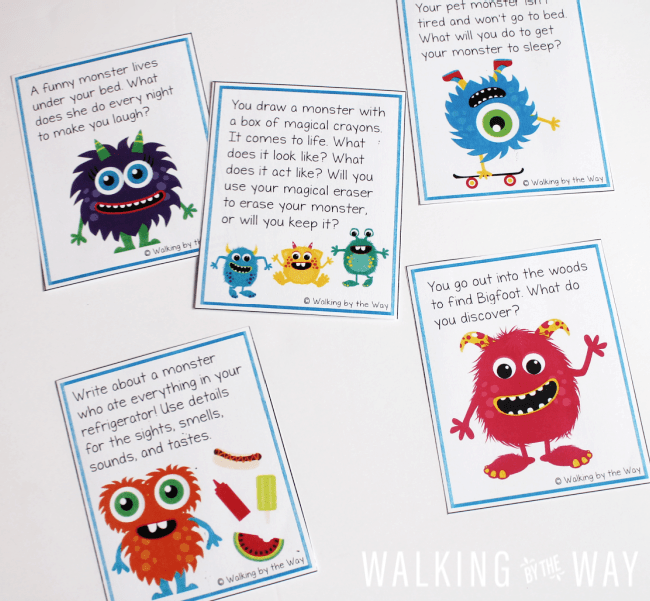
How to Use the Monster Creative Writing Prompts
You can use these monster writing prompt cards with a variety of ages.
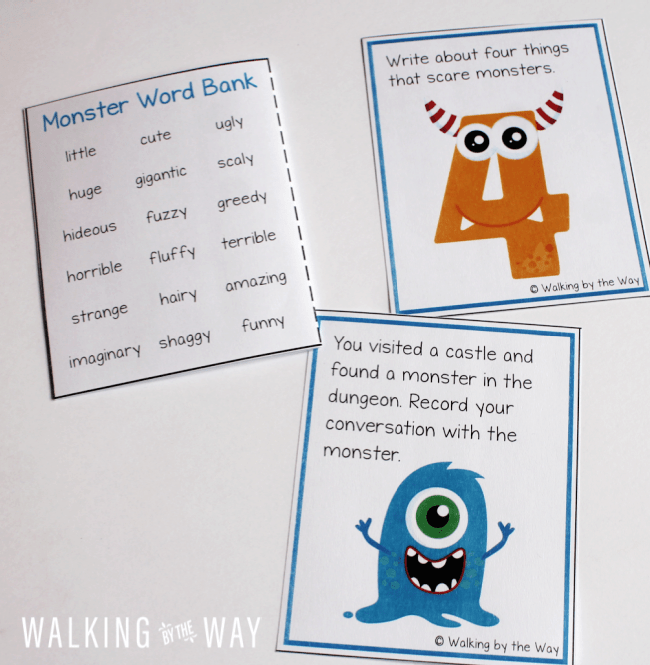
Directions:
- Print the word bank card and prompt cards and cut out the cards.
- Laminate the cards for durability. If desired, hole punch the cards and add them to a metal ring .
- Consider reading a monster book (or books) to your student.
- Let your student choose a card. (If you are homeschooling, you could add a bit of mystery by putting the cards in a jar and letting your student draw a card.)
- If your student has a hard time writing, ask questions and dialogue ideas together before your student begins.
- Decide if you want to give your student a guideline (This needs to be at least four sentences.) If you do, be clear about your expectation.
Inspire Creative Writing with These Monster Books
To give your students extra inspiration for their responses to the monster writing prompts, try reading some of these picture books before writing time.
- I Need My Monster by Amanda Noll
- There’s a Monster in Your Book by Tom Fletcher
- Where the Wild Things Are by Maurice Sendak
- How to Catch a Monster by Adam Wallace
- The Gruffalo by Julia Donaldson
Download Your Monster Writing Prompts
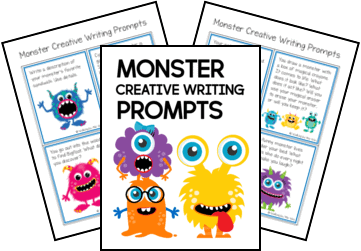
Subscribe to Walking by the Way’s Newsletter in order to grab this free creative writing activity.

Leave a Reply Cancel reply
Your email address will not be published. Required fields are marked *
Save my name, email, and website in this browser for the next time I comment.

BRYN DONOVAN
tell your stories, love your life
- Writing Inspiration
- Semi-Charmed Life
- Reading & Research
- Works In Progress.
Master List of Ways to Describe Fear
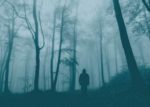
People have been asking me for this list for such a long time! If you write horror, suspense, mystery, or any kind of fiction with a scary scenes, you need to know how to describe fear.
This list can get you started. It’s a lot of phrases describing fear, including physical reactions, physical sensations, facial expressions, and other words you can use in your novel or in other creative writing.
I’ve included some that can work for uneasiness or anxiety, but most of these are for real terror. You can alter them to fit your sentence or your story, and they’ll likely inspire you to come up with your own descriptions.
Bookmark or pin this page for your reference—it might save you a lot of time in the future. I’ll probably add to it now and again!
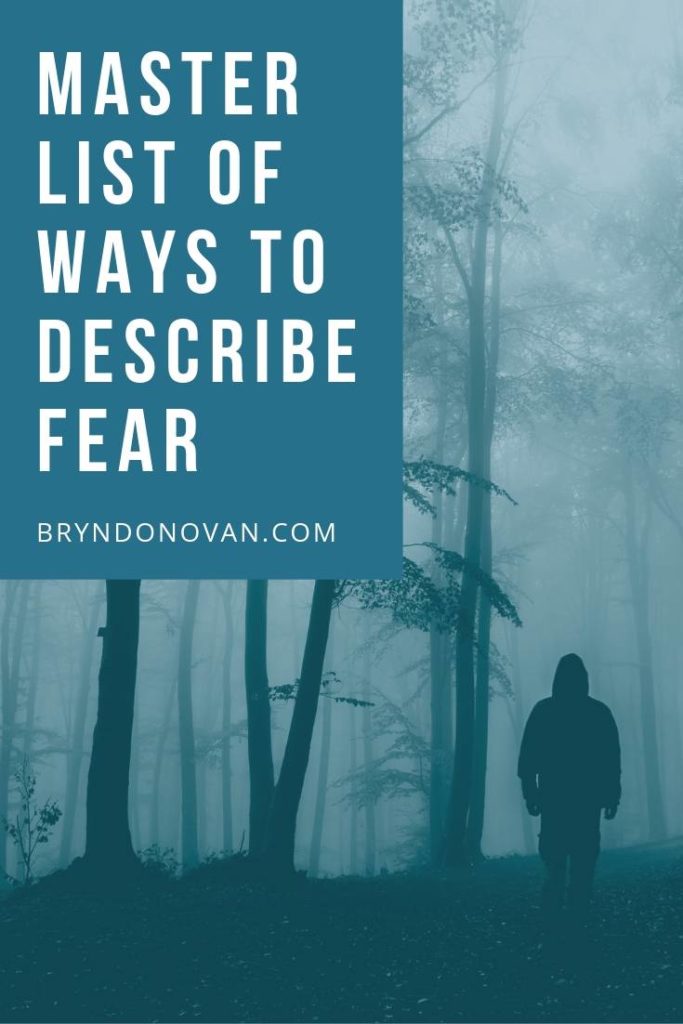
fear paralyzed him
his terror mounted with every step
she fought a rising panic
fear tormented her
her heart was uneasy
her heart leaped into her throat
his heart hammered in his chest
his heart pounded
terror stabbed his heart
his heart jumped
her heart lurched
a fear that almost unmanned him
his body shook with fear
she trembled inside
he suppressed a shiver
panic surged through him
her fear spiked
he was in a complete state of panic
she could feel nothing but blind terror
his legs were wobbly with fear
she sweated with fear
his hands were cold and clammy
she was weighed down by dread
dread twisted in her gut
his stomach clenched
fear fluttered in her stomach
her belly cramped
he felt like he might throw up
she was sick with fear
she was frightened down to the soles of her shoes
he was icy with panic
her body went cold with dread
raw panic was in her voice
her voice was thick with fear
his voice was edged with fear
terror thundered down on him
fear caught her in its jaws
fear clawed up her throat
terror sealed her throat
fear gripped her throat
his throat tightened
then she knew real terror was
he was frantic with fear
she was half mad with terror
the color drained from her face
his face was ashen
she blanched
dread gnawed at his insides
dread had been growing in him all day
fresh terror reared up within her
fear choked him
terror stole her words
he was mute with horror
her voice was numb with shock
his voice was shrill with terror
her defiant words masked her fear
her body felt numb
his blood froze in his veins
terror coursed through her veins
fear throbbed inside her
his panic fueled him
adrenaline pumped through his body
adrenaline crashed through her
fear pulsed through him
her scalp prickled
the hairs on the back of her neck stood up
his mouth went dry
his bones turned to jelly
her bones turned to water
she froze with horror
he didn’t dare to move
terror struck her
he was too frightened to lift her head
she was too frightened to scream
his mouth was open in a silent scream
he cringed with fear
she cowered
he shrank back in fear
she flinched
a bolt of panic hit her
terror streaked through him
her terror swelled
his panic increased
anxiety eclipsed his thoughts
panic flared in her eyes
his eyes were wild with terror
her eyes darted from left to right
she feared to close her eyes
he lay awake in a haze of fear
she walked on in a fog of fear
his eyes widened with alarm
she tried to hide her fear
he struggled to conceal his shock
fear crept up her spine
fear trickled down her spine
panic seized his brain
she felt a flash of terror
fear took hold of him
fear flooded through her being
she ordered a drink to drown the panic
he arranged and re-arranged the items on his desk
a nameless dread engulfed him

I bet you came up with other ideas as you were reading!
For more writing lists, check out my book Master Lists for Writers , if you don’t have it yet! A lot of writers use it to make writing go faster, especially when it comes to descriptions.

And if you’re not following the blog already, sign up below—I share lots of writing resources. Thanks so much for reading, and happy writing!
Related Posts
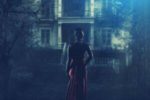
Share this:
30 thoughts on “ master list of ways to describe fear ”.
Thank you, Bryn. I can certainly use this list as I go through and clean up my novel. There are some places that need a stronger element of fear.
Hi Bonnie! So glad this was coming at the right time! 🙂
Love the book and the above list! Thank you for taking the time to compile all of it. So appreciated!
Oh thank you! I’m so glad you like it!
I just love your lists. I often refer to them when I’m stuck. That book is right next to the dictionary and thesaurus when I write.
I’m so glad you like them, Erin! I’m honored. 🙂
I was searching for the perfect list to describe fear. I stumbled across your blog and I am glad that I did, you literally saved my butt out there!!? I got an A* because of you ! Thankyou!!❤❤
Aww, I’m so glad to hear this! 🙂
Thanks for compiling this list. Much needed.
Aw thanks, Ezekiel! So glad you like it!
What a terrifying, fantastical list. Thank you, Bryn
Haha, thanks, Bryan! When I read back over it, I did feel a little creeped out. 🙂
I have a scene coming up that this will be perfect for. Thank you for sharing. Bookmarking now!
Hi Sarah! So glad it’ll be useful! Sounds like you have an exciting scene coming up 🙂
- Pingback: How to Write a Novel: Resources - MultiTalented Writers
This is a great list! Thank you, Bryn.
Wow! When I read it, I was SO / COMPLETELY creeped out!???
Ha! You know what, when I make these lists, I always start feeling the emotions, too!
I’m thankful for your help. It is great to see these lists. Many blessings ❤️
I have been a bibliophile since long, but never before did I read so many blogs in a sequence. I am really amazed to have found them.Thanks a ton . Superb work .
You saved my life ! Thank you a lot ???
So glad to hear that! Happy writing 🙂
Thanks… It’s good to know tath someone is making life easier for those interested in writing.
ohhh ,how grateful i am for this list it will come in handy so thankyou
- Pingback: Master List of Actions That Show Fear
Thank you so much for this list! It is exactly what I was looking for. I ordered the book 🙂
Thanks for ordering the book, Laila. I hope you like it! And glad this list worked for you!
This is an amazing list. I saw in your other comment that you have a book…?
I wanted to tell you that I often return to this page when I am stumped coming up with a way to write some specific reaction. Sometimes I just use one of the ideas you offer directly, and other times something here gives me an idea I riff off of to create something new. Thank you so much for compiling this list!
I riffed this time (last line): “Still feeling the sadness of Manzoa’s fate and wondering what this place was and why he was here, Goff cautiously walked over to the desk. A quill still wet with thick black ink rested next to a sheet of parchment filled with writing in a language he couldn’t read. Crude drawings made with heavy strokes were set within the words. Some of them were disturbing — a bleeding hand cut open with a knife and a person floating lifeless below a ghoul with black eyes poised to attack. He stared at the words, hoping that just like when he traveled back in time to Monstraxen, he would be able to understand them. As he stared, the ink on the page disappeared like water soaking into a sponge. A spider of panic crawled up his spine.”
Leave a Reply Cancel reply
This site uses Akismet to reduce spam. Learn how your comment data is processed .
Discover more from BRYN DONOVAN
Subscribe now to keep reading and get access to the full archive.
Type your email…
Continue reading
Log in or Sign up
You are using an out of date browser. It may not display this or other websites correctly. You should upgrade or use an alternative browser .
AlexK New Member
Describe a snake.
Discussion in ' Character Development ' started by AlexK , Jul 19, 2014 .
googletag.cmd.push(function() { googletag.display('funpub_f0d58904fca5f6683d517a3c6a98c58a'); }); If you lived in ancient times, how would you describe a snake?
ToeKneeBlack Banned
googletag.cmd.push(function() { googletag.display('funpub_f0d58904fca5f6683d517a3c6a98c58a'); }); "The slender serpent slithered silently, its scaly skin shimmering in the sunlight as its tongue occasionally flicked out to taste the fear in the air." Though you might want to avoid the alliteration, it's up to you.
maskedhero Active Member
googletag.cmd.push(function() { googletag.display('funpub_f0d58904fca5f6683d517a3c6a98c58a'); }); A monstrous beast that hugs the ground, soulless, dark, and menacing.
peachalulu Member Reviewer Contributor

googletag.cmd.push(function() { googletag.display('funpub_f0d58904fca5f6683d517a3c6a98c58a'); }); Stick-that-moves Serpent Ophidian
jazzabel Agent Provocateur Contributor
googletag.cmd.push(function() { googletag.display('funpub_f0d58904fca5f6683d517a3c6a98c58a'); }); Australian Aborigines described a snake as a rainbow.
cutecat22 The Strange One Contributor

googletag.cmd.push(function() { googletag.display('funpub_f0d58904fca5f6683d517a3c6a98c58a'); }); belly crawler!
Catrin Lewis Contributor Contributor Community Volunteer Contest Winner 2023

googletag.cmd.push(function() { googletag.display('funpub_f0d58904fca5f6683d517a3c6a98c58a'); }); Legless one
AlannaHart Senior Member
googletag.cmd.push(function() { googletag.display('funpub_f0d58904fca5f6683d517a3c6a98c58a'); }); Depends where it's set and how ancient the times.
ChronoArt New Member
googletag.cmd.push(function() { googletag.display('funpub_f0d58904fca5f6683d517a3c6a98c58a'); }); I am not sure, if I did this correctly. I imagined how a scholar in those times would write it, if he wanted to create a description of all living things. "Sly serpent was created by God on the sixth day after creation, for it inhabits the land. It bears no limbs and is coated in hard scales. Once upon a time, serpent is able of shedding it's scales. Beware, you, who tries to befriend snakes. Many of them have sharp fangs it their mouth. They are venomous and single bite can kill."
jannert Retired Mod Supporter Contributor

googletag.cmd.push(function() { googletag.display('funpub_f0d58904fca5f6683d517a3c6a98c58a'); }); peachalulu said: ↑ Stick-that-moves Serpent Ophidian Click to expand...
Share This Page
- Log in with Facebook
- Log in with Twitter
- Log in with Google
- No, create an account now.
- Yes, my password is:
- Forgot your password?

- Search titles only
Separate names with a comma.
- Search this thread only
- Display results as threads
Useful Searches
- Recent Posts
- This site uses cookies to help personalise content, tailor your experience and to keep you logged in if you register. By continuing to use this site, you are consenting to our use of cookies. Accept Learn More... Dismiss Notice

IMAGES
VIDEO
COMMENTS
How to Write a Monster That Will Scare Your Readers. Written by MasterClass. Last updated: Nov 12, 2021 • 4 min read. From Count Dracula to Ramsay Bolton, some of the most memorable characters in literature are monsters. Use these examples and tips to generate great monster ideas for your own writing.
Desolate: The monster wandered through a barren wasteland, a solitary figure in a world devoid of life.; Otherworldly: The monster emerged from a portal, its surroundings pulsating with strange energy.; Describing Words for monsters in English. When it comes to describing monsters, choosing the right adjectives can bring your writing to life.
Writing a monster that's actually scary to read is not easy. So let's go over some examples of terrifying monsters from books, talk about why they work, then practice writing some of our own together! During the last stream, a subscriber requested that we go over how to write a terrifying monster.
Notice the verbs that Blatty uses with Reagan — gleamed, dribbled, gloated, croaked, rumbled. In contrast, the more calm individual in the scene, Karras, responds with simple verbs like "answered" and "saw". The contrast allows the reader to see Reagan as disturbing. If you want to make your readers squirm, reading only in daylight ...
Start With the Standard Traits. These are the things your character will notice first. Things like color, size, and shape matter. But think more along the lines of its similarities to existing animals (more on that below) or one memorable trait, such as glowing eyes, enormous wings, or a distinct screeching sound.
Albert Einstein once said, "Imagination is more important than knowledge.". And the human imagination is pretty powerful. How many times have you imagined something will be absolutely terrifying—a roller coaster, a job interview, a scary movie—and when it's over you immediately say, "That wasn't so bad.".
A forum thread where writers share and critique their descriptions of monsters in horror stories. Learn how to make your monster more horrific by using actions, details, and avoiding repetition and hyperbole.
It's no accident that Stephen King is one of the world's best-selling authors. He knows what scares us—it isn't just kids and clowns—and he knows how to use words to invoke that fear in the same way a horror movie director uses lighting and editing. Click to continue. Brian Klems. By. Philip Athans.
Step 1: Brainstorm Your Monster. Step 2: Design Its Appearance. Step 3: Develop a Backstory. Step 4: Your Monster's Weakness. Step 5: Create Your Story's Setting. Step 6: Introduce Your Monster. Step 7: Use the Feeling of Uncertainty and Unpredictability. My Experience Writing An Award-Winning Monster.
Philip Athans is the New York Times bestselling author of Annihilation, and a dozen other books, including The Guide to Writing Fantasy and Science Fiction. He's also an editor, professional speaker, and writing coach. Today, we're talking about his book, Writing Monsters: How to Craft Believably Terrifying Creatures to Enhance Your Horror ...
Our Monster Writing Prompts will push the boundaries of your creativity, encouraging you to think outside the box and weave narratives that will leave readers craving more. So, grab a pen, summon your imagination, and let the monsters come to life on the pages of your stories.
So let's get down to brass tacks on how to successfully achieve fear and believability when crafting tales of terror, especially those with monstrous antagonists. 7 Tricks for Writing Terrifying Horror Fiction & Monster Stories. 1. Introduce the Frightening Elements Early. Most horror and monster stories start fairly briskly, introducing the ...
A monster. Which means your task is to create a monster that will terrify your readers. When writing monsters, you could rely on the tried-and-true vampires, zombies, and giant, man-killing spiders. There's nothing wrong with adding to the monster canon, but it does get a little boring after a while. It's often better to create a monster all ...
One thing that's particularly hard to capture in writing is sound. Visual stimuli is the easiest, in my personal opinion, as you can describe color, texture, and movement. The sense of touch seems a bit more straightforward as well. ... Human/Monster Noises. Alright so this distorted, weird sound is a perfect example of just how sound can be ...
A true horror monster needs to act as a threat against us. Part of a horror narrative: If the monster is not written into a horror narrative, then it does not count as a horror monster. Take Sesame Street for example. Oscar the Grouch or The Count are monster-like creatures, particularly the vampire, but they don't exist as horror monsters.
Through using a common phobia as part of your monster creation, you will be able to tap into your reader's deepest overwhelming fears to help create a truly terrifying monster. Also by using a fear that may belong to one of your main characters - you can create an effective story arc where near the end of the story - the character ...
Let's take a look at seven of them…. 1. Detail is a dirty word. It's a general rule in writing that you should leave as much to the reader's imagination as you can, and this is doubly true for action scenes. The choreography of the fight may be exact in your head, but you can't force readers to see the same thing.
Directions: Print the word bank card and prompt cards and cut out the cards. Laminate the cards for durability. If desired, hole punch the cards and add them to a metal ring. Consider reading a monster book (or books) to your student. Let your student choose a card.
A quill still wet with thick black ink rested next to a sheet of parchment filled with writing in a language he couldn't read. Crude drawings made with heavy strokes were set within the words. Some of them were disturbing — a bleeding hand cut open with a knife and a person floating lifeless below a ghoul with black eyes poised to attack.
This video focuses on how you can write description of a sea monster using "show, don't tell" strategy and how to use senses to add detail and improve your ...
How to Create a Monster. 12Nov. Ali Simpson's story, "The Monster," was first published in TheSouthampton Review and recommended to Electric Literature by Susan Merrell. Everyone loves a good horror story. But anyone who tries to write such a story quickly discovers that it's not enough to simply create a monster.
Likes Received: 128. "The slender serpent slithered silently, its scaly skin shimmering in the sunlight as its tongue occasionally flicked out to taste the fear in the air." Though you might want to avoid the alliteration, it's up to you. ToeKneeBlack,Jul 19, 2014. #2. wolfndolfriend2001 and AlexK like this.
Use this adjectives writing activity to help children to create a description of a character. Linking to the Twinkl Originals story, 'A Monster Surprise,' this resource contains three differentiated pages. On a series of ruled lines, students must describe the appearance and personality of the monster, with words from a list. By the third page, they must think of their own adjectives to do ...